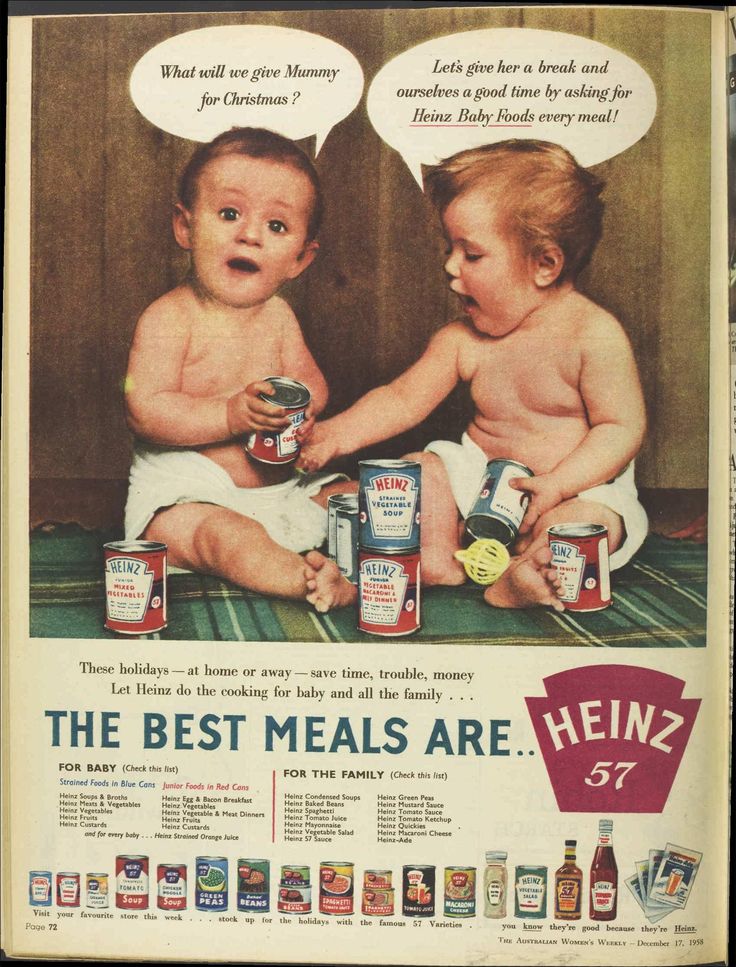Baby food recipes 5 months australia
Stage 1 Homemade Baby Food Recipes for Baby 4 to 6 Months and older.
Stage One Baby Foods – Commonly Offered Stage 1 Baby Foods:
Stage 1 Fruits:
Apples | Avocados | Apricots | Bananas | Mango | Nectarines & Peaches | Papaya | Pears | Plums & Prunes | Pumpkin
Stage 1 Veggies:
Beans (Green) | Carrots | Peas | Sweet Potato | Squash
Stage 1 Grains:
Rice | Oatmeal | Barley
What is a “Stage 1” baby food?
(4) 6-8 Months –
Baby Let’s Begin to Eat“Baby” cereal and soft cooked thinly pureed fruits and veggies should be baby’s first solid food experiences. Single ingredients only and at a space of 4 days apart with introducing each new food. You may skip the cereal and begin with a fruit like avocado or begin with a veggie like butternut squash or sweet potato.
Stage 1 Baby Food is a term that applies to baby foods that are highly pureed and strained. These foods are appropriate for babies who are just being introduced to solid foods. The foods in this range are targeted to babies who are between the ages of (4) 6 to 8 months old.
Stage 1 baby foods are thin and runny and are foods that are the lowest on the allergy scale. Stage 1 baby foods are typically those foods that are also more easily digested by a tiny tummy. Some of these foods include, sweet potatoes, butternut or winter squash and carrots. The term “Stage 1” was introduced by the Beechnut Baby Food Company to let parents know that these foods are appropriate for their infants who are just being introduced to solid foods.
There is a growing trend of parents skipping “stage 1” foods that are thin and runny purees. Many parents are turning to a more baby-led weaning approach and are offering soft cooked small bits of age-appropriate foods as they begin to introduce solid foods. Your baby might just be interested in this feeding approach!
Stage 1 Homemade Baby Food Recipes – Cereal, Fruits & Veggies
Rice Cereal- 1/4 c. rice powder (brown rice ground in blender or food processor)
- 1 cup water
Step 1: Bring liquid to boil in saucepan. Add the rice powder while stirring constantly.
Step 2: Simmer for 10 minutes, whisking constantly, mix in formula or breast milk and fruits if desired
Step 3: Serve warm.
Oatmeal Cereal
- 1/4 c. of ground oats (do NOT use instant or Quick Cook), ground in blender or food processor
- 3/4 c.
 water
water
Step 1: Bring liquid to boil in saucepan. Add the rice powder while stirring constantly.
Step 2: Simmer for 10 minutes, whisking constantly, mix in formula or breast milk and fruits if desired
Step 3: Serve warm.
Barley Cereal
- 1/4 c. ground barley (barley ground in blender or food processor)
- 1 cup water
Step 1: Bring liquid to a boil. Add the barley and simmer for 10 minutes, whisking constantly
Step 2: Mix in formula or breast milk or juice and add fruits if desired
Step 3: Serve warm
Did you know that baby’s first food does not have to be a commercial infant rice cereal? Many pediatric resources are acknowledging the fact that avocado, banana and sweet potato make great first foods for baby. For More Information About Homemade Baby Cereal, visit Our Homemade Baby Cereal FAQ
Feeding Baby Stage 1 Baby Foods
Start out slowly, preparing a tablespoon sized portion of whatever food you have chosen to begin with. Some parents begin offering their babies solid foods by using their (clean and washed) finger as a spoon. They say that this helps their babies take to solid foods because the “new” spoon and the “new” food all at once seem to confuse baby.
Some parents begin offering their babies solid foods by using their (clean and washed) finger as a spoon. They say that this helps their babies take to solid foods because the “new” spoon and the “new” food all at once seem to confuse baby.
You will probably only manage to have baby eat 1/2 of the tablespoon sized portion the very first times you begin solids. Don’t fret if your baby does not “finish” a meal.
Apricot Puree 6-8 months+ (using dried un-sulphured apricots)
Vitamins: A, C, Folate
Minerals: Potassium, Phosphorus, Calcium
- 1 pound dried apricots
- 2 cups of white grape juice, pear or apple juice. Plain water is ok but the puree may be a bit bitter.
Step 1: Bring liquid and fruit to a boil and simmer for 15 minutes.
Step 2: Reserve any left over liquid to use for the puree
Step 3: Place into your choice of appliance for pureeing and begin pureeing.
Step 4: Add the reserved liquid as necessary to achieve a smooth, thin puree or
Step 5: Add cereal (if desired) to thicken up
Step 6: Note: puree will not freeze solid, but into slightly soft/slightly frozen cubes.
Have you ever Baked Fruits? If not, I highly recommend it. Baked fruits are naturally sweet, soft and oh so very yummy.
Apples/Applesauce (4)6 months+ Try Gala, Braeburn, Rome or Macs)
Vitamins: A, C, Folate
Minerals: Potassium, Magnesium, Calcium
This recipe is written so that you may use any amount of apples you wish.
Step 1: Peel, core and cut apple into slices/chunks
Step 2: Place slices or chunks into a pan with just enough water to slightly cover apples
Step 3: Boil/steam until tender; be sure to check on the water level and stir, T hat’s It. Easy Peasy.
Step 4: Apples may be mashed with a potato masher to achieve a smooth applesauce consistency. If your masher will not achieve a puree type of consistency, then follow steps 5 – 7
Step 5: Reserve any left over water to use for thinning out the apples
Step 6: Place into your choice of appliance for pureeing and begin pureeing.
Step 7: Add the reserved water as necessary to achieve a smooth, thin puree
Step 8: Add cereal (if desired) to thicken up the
Step 9: Ask your pediatrician about adding some cinnamon for new tastes.
You may also buy an “Adult” jar of Natural applesauce from your local grocers. Make sure you buy Natural Applesauce however. Read the labels if you are unsure. The only ingredients should be apples and water or just apples. A few companies may add ascorbic acid (vitamin C) or citric acid to their Natural Applesauce; this is fine.
Avocado (yes, avocado is a fruit.) (4)6 months+
Vitamins: A, C, Niacin, Folate
Minerals: Potassium, Phosphorus, Iron, Magnesium, Calcium
Step 1: Peel and take out the pit of a ripe avocado – do not cook
Step 2: Cut “meat” out and mash with a fork
Step 3: There should be no need to use a machine as just like bananas, avocados have a very soft consistency and texture. Avocados do not need to be cooked.
Visit the Avocado Baby Food page for more recipes and Information
Baked Apples 6-8 months+
Step 1: Core apple and leave peel on
Step 2: Place a wee bit of butter (if baby is ready for or has had dairy) on the inside of the cored apple (sprinkle a bit of cinnamon in the apple if your desire and if baby is ready for or has had cinnamon)
Step 3: Place in a pan with just enough water to slightly cover apples – about an inch of water
Step 4: Bake in a 400-degree oven for 30 minutes or until tender; be sure to check on the water level.
Step 5: Once baked, either cut apple into little bits and serve as a finger food or mash as directed above in the Apples/Applesauce recipe.
Banana Applesauce Mush (4)6 months+
- 1 apple
- 1 ripe banana
Step 1: Peel, core and cut apple into slices/chunks
Step 2: Place slices or chunks into a pan with just enough water to slightly cover apples
Step 3: Boil until tender; be sure to check on the water level.
Step 4: Apples may be mashed with a potato masher to achieve a smooth applesauce consistency or you can puree in an appliance as shown above
Step 5: Peel a ripe banana and mash in a bowl with a fork (heating in the microwave for approximately 20 seconds will soften the banana up if needed)
Step 6: Add applesauce to the banana and sprinkle with wheat germ* or crushed cheerios*
Step 7: Puree if necessary but mashing with a potato masher will typically get this mix smooth
*8 months+
Back to Top
Bananas (4)6 months+
Vitamins: A, C, Folate
Minerals: Potassium, Phosphorus, Selenium, Magnesium, Calcium
- 1 Banana or however many you wish
Step 1: Peel ripe banana – do not cook
Step 2: Place banana in a food processor/food mill or blender and puree
Step 3: You can also mash the banana in a bowl using a regular fork – heat in microwave for 25 seconds prior to mashing for extra softness
Step 4: Add formula/breast milk or water to thin or add cereal (if desired) to thicken up.
Mango Madness 6-8months+
Vitamins: A (1262 IU in one cup), C, E, K, Folate
Minerals: Potassium, Phosphorus, Magnesium, Calcium, Sodium
- 1 Ripe Mango
Step 1: Peel, de- seed and chunk the mango
Step 2: Place mango chunks in a blender or food processor
Step 3: Add Formula, Breast Milk, or Water and blend or mash until the proper consistency for your Infant is achieved.
How to Cut A Mango:
Cut the mango lengthwise, along the side of the mango pit. You will be cutting off its flesh from one side then repeating the same process on the other side. You will then cut the ends off the mango pit.
Cut the remaining flesh from the pit. Use a small sharp knife peel the skin from the flesh. Dice or cube as desired. It is easier to make your cubes/dices prior to removing the skin. Make sure you don’t cut through it. Once you have made your cube/dice “pattern” simply turn the skin skin inside out and slice the pieces away.
*Mango does not need to be cooked as it is typically introduced at an age where baby can tolerate raw fruits. Mango may be steamed to tender and then mashed if you prefer without harming it.
You may use mango as a great Baby Finger Foods. Simply peel, de-seed and then cut into dices or chunks that are manageable for your baby. You may wish to coat the mango pieces with “cheerio dust”, wheat germ or another cereal “dust” to help baby easily pick up the bits.
Papaya 6-8months+
Vitamins: A, C, Folate
Minerals: Potassium, Calcium
- 1 ripe papaya
Step 1: Peel, de-seed and chunk the papaya
Step 2: Place papaya chunks in a blender or food processor
Step 3: Add formula, breast milk, or water and blend or mash until the proper consistency for your Infant is achieved.
Some parents who have infants with sensitive tummies will give fruits a gentle steaming to help break down the sugars and fibers for easier digestion. If you feel this is the case for your infant, chunk the papaya and then steam for 5-10 minutes until very soft.
If you feel this is the case for your infant, chunk the papaya and then steam for 5-10 minutes until very soft.
Pears, Plums, Peaches and Nectarines too
Pear (Great for Constipation.) (4)6 months+Vitamins: A, C, Folate
Minerals: Potassium, Phosphorus, Magnesium, Calcium
Step 1: Peel and cut into chunks so as to avoid the little seed portion.
Step 2: Steam gently until tender if baby is under 6 months.
Step 3: Place in a blender/food processor and puree until smooth; you may be able to just use a fork!
Step 4: Use the leftover cooking water if needed but Pears tend to be very runny and watery without adding liquid.
Step 5: Add some baby cereal to thicken if needed.
Plums (4)6-8 months+
Vitamins: A, C, Folate
Minerals: Potassium, Phosphorus, Magnesium, Calcium
- 2-3 ripe plums
Step 1: Peel and pit the plums
Step 2: Cut into chunks
Step 3: Steam until tender in a scant amount of water if baby is under 6 months.
Step 4: Puree using the leftover cooking liquid.
You may need to mix in another fruit as plum purée has a tendency to be rather tart and/or bitter
Peaches (4)6-8 months+
Vitamins: A, C, Folate
Minerals: Potassium, Phosphorus, Magnesium, Calcium
You may steam or bake peaches; these methods work for nectarines, plums and pears as well. I HIGHLY recommend giving baked peaches a try at least once. You will find they are more tasty when baked.
Steam Peaches – Method 1
Step 1: Scrub fruit clean and carve an X into 1 side of the fruit
Step 2: Place X side down in a pan with an inch of water
Step 3: Bring water to a boil and steam until soft and tender
Step 4: Peel skin from fruit and remove pits and/or seeds
Step 5: Move to step #6 below
Steam Peaches – Method 2
Step 1: Peel fruit
Step 2: Pit the peach
Step 3: Cut the peach into dices
Step 4: Steam until soft and tender then
Step 5: Move to step #6 below
Bake
Step 1: Halve the fruit and place “open” side down in a pan filled with 1 inch of water
Step 2: Bake at 400F until soft and tender and/or puckering of the skin appears.
Step 3: Peel skin from fruit and remove pits and/or seeds then
Step 4: move to step #6
Step 5: Reserve any left over water to use for thinning out the fruits
Step 6: Peel off skin then place into your choice of appliance for pureeing and begin pureeing.
Step 7: Add the reserved water as necessary to achieve a smooth, thin puree
Step 8: Add cereal (if desired) to thicken up.
Back to Top
Prunes 6-8 months+
Vitamins: A, C, Folate
Minerals: Potassium, Phosphorus, Magnesium, Calcium
- 1 small bag of dried prunes (try to use unsulphured dried fruits whenever possible!)
Step 1: Soak dried prunes in warm water until they plump up or steam gently.
Step 2: Once plump and tender, toss into food processor or blender and begin to puree.
Step 3: Add liquid without sparing any.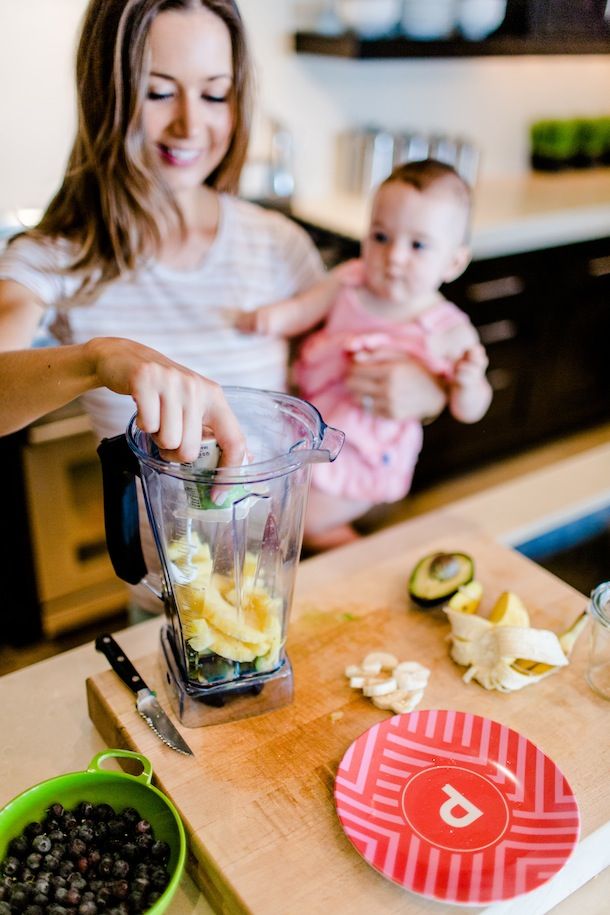 Prunes tend to become a pasty gluey consistency when pureed and the more water you add, the easier it is to puree to a texture your baby will tolerate.
Prunes tend to become a pasty gluey consistency when pureed and the more water you add, the easier it is to puree to a texture your baby will tolerate.
Pumpkin (4)6-8months+
Read more about Pumpkin on the Pumpkin Baby Food page
Vitamins: A (12230 IU in 1 cup.), C, K, Folate, Niacin
Minerals: Potassium, Phosphorus, Magnesium, Calcium, Iron
- 1 medium sugar pumpkin, no heavier than 5 pounds
Step 1: Cut sugar pumpkin (the kind meant to be baked and eaten.) in half, scoop out seeds
Step 2: Place an inch of water in a baking pan, then place the halves “face” down in the pan. Check on water level while baking
Step 3: Bake in a 400 degree oven for 40 minutes or until the “shell/skin” puckers and halves feel soft then scoop squash “meat” out of the shell
Step 4: Place pumpkin “meat” into your choice of appliance for pureeing and begin pureeing.
Step 5: Add water as necessary to achieve a smooth, thin consistency.
Step 6: You can also peel the pumpkin, scoop out the seeds and then cut into chunks and boil/steam until tender (like when boiling potatoes for mashed potatoes) then follow steps 4 and 5.
You may also buy a can of pumpkin from your local grocers. Make sure you buy Pumpkin and NOT Pumpkin Pie mix however. Read the labels if you are unsure. The only ingredients should be pumpkin and water or just pumpkin. You do not need to cook canned pumpkin. You may thin the pumpkin with whatever liquid you prefer and then serve or warm and serve. You may also freeze canned pumpkin in ice cube trays if you wish.
Green Beans (4) 6 months+
(this method may be used for Peas as well)*
Vitamins A, C, K, Niacin, Folate
Minerals:Potassium, Sodium, Phosphorus, Iron, Magnesium, Calcium
Step 1: If using Fresh Beans, snap the ends off the beans and wash the beans. If using Fresh Peas, open the pods and scrape out the peas from the pod. If using frozen of either Peas or Green Beans, cook according to package directions.
If using Fresh Peas, open the pods and scrape out the peas from the pod. If using frozen of either Peas or Green Beans, cook according to package directions.
Step 2: Place fresh beans into a steamer basket in a pan with a just enough water to slightly show through in the basket.
Step 3: Steam until very tender; be sure to check on the water level.
Step 4: Reserve any left over water to use for thinning out the beans.
Step 5: Place into your choice of appliance for pureeing and begin pureeing. It is best to use the setting that makes the finest liquid purees – green bean and pea skins are rather difficult to completely puree.
***Using a blender rather than a food processor or stick mixer might be better as well. ***
6. Add the reserved water as necessary to achieve a smooth, thin consistency
7. You may wish to push the green beans (or peas) through a sieve or mesh strainer to get rid of any remaining skins.
Carrots* 6-8 months+
Vitamins A (19,152 IU), C, Folate
Minerals:Potassium, Sodium, Phosphorous, Iron, Magnesium, Calcium
Step 1: Peel carrots and cut into small chunks
Step 2: Place chunks into a steamer pan with just enough water visible through the steamer basket
Step 3: Steam until tender
Step 4: Do not reserve any left over water to use for thinning out the carrots if baby is under 8 months old as Nitrates may seep into the cooking water
Step 5: Place into your choice of appliance for pureeing and begin pureeing.
Step 6: Add water as necessary to achieve a smooth, thin consistency
*(See Our article on Nitrates)
Garden Vegetable Combo
6-8 months+ after all vegetables have been introduced following the 4 Day Wait Rule
Green Beans, Summer Squash, Peas and Carrots
Step 1: Combine fresh or frozen green beans and peas, summer and/or zucchini squash and small pieces of chopped carrots.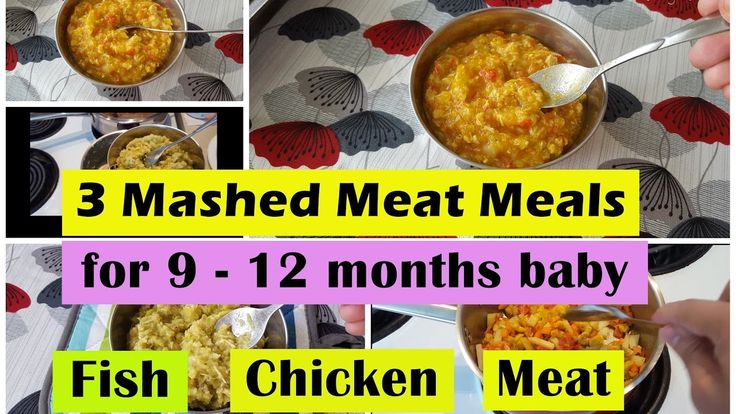
Step 2: Add enough water to just cover the vegetables.
Step 3: Cook until tender, reserving water.
Step 4: Puree vegetables in blender or food processor,
Step 5: Adding reserved water from the vegetables until mixture is of the desired consistency.
Peas
Vitamins A (4533 IU), C, Niacin, Folate
Minerals: Potassium, Sodium, Selenium, Phosphorous, Iron, Magnesium, Calcium, Zinc
Step 1: If using Fresh Peas, open the pods and scrape out the peas from the pod. If using frozen type of either Peas or Green Beans, cook according to package directions.
Step 2: Place fresh peas into a steamer basket in a pan with a just enough water to slightly show through in the basket.
Step 3: Steam until very tender; be sure to check on the water level.
Step 4: Reserve any left over water to use for thinning out the peas.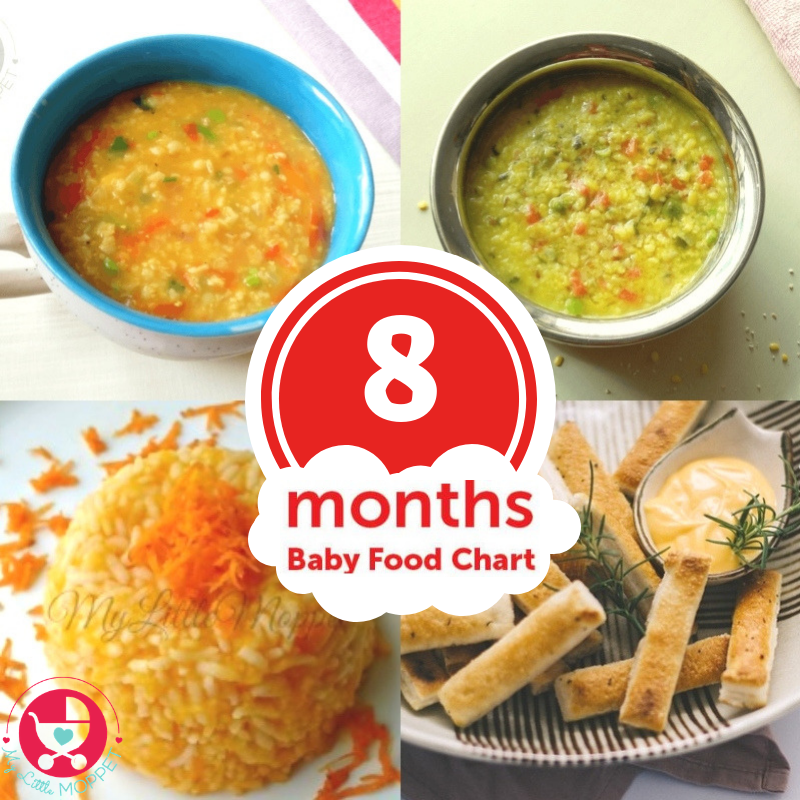
Step 5: Place into your choice of appliance for pureeing and begin pureeing. It is best to use the setting that makes the finest liquid purees – green bean and pea skins are rather difficult to completely puree. Using a blender rather than a food processor or stick mixer might be better as well.
Step 6: Add the reserved water as necessary to achieve a smooth, thin consistency
Step 7: You may wish to push the peas (or green beans) through a sieve or mesh strainer to get rid of any remaining skins
Why can’t I get peas and green beans to puree smooth?
If you are using a Food Processor, try the Blender. The Blender seems to work the best for getting Peas into a more fine puree. Peas and green beans are very hard to get pureed into a very fine, smooth consistency. You can put them in a strainer and work out the “skins” if using fresh or you can use frozen for a smoother consistency and minimal effort to work out the “skins”.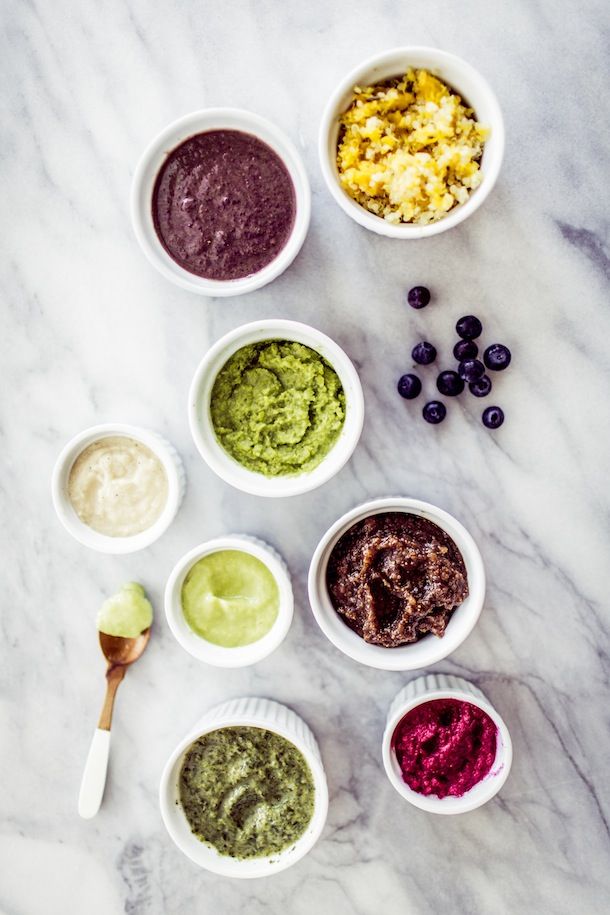
Another method for getting beans and peas smoother is to immediately plunge them into ice cold water once you remove them from the stove top. Once cooled, puree as usual.
You may also use beans/legumes (kidney beans, lentils, split peas etc..) if your doctor says it is OK for baby’s age.
Please keep in mind that you will never be able to achieve the consistency equal to that of the baby food that comes in jars. Some parents choose to leave green beans and peas for later introduction, when baby enjoys texture and is able to eat them as Baby Finger Foods
Squash (Winter – Butternut, Acorn, Hubbard) (4) 6 months+
(nutrient info for squash of all types may be found at the Squash for Baby page)
- 1 medium sized butternut or acorn squash
Step 1: Cut acorn, hubbard, or butternut squash in half, scoop out seeds
Step 2: Place an inch of water in a baking pan, then place squash halves “face” down
in the pan. Check on water level while baking
Check on water level while baking
Step 3: Bake in a 400 degree oven for 40 minutes or until the “shell/skin” puckers and halves feel soft then scoop squash “meat” out of the shell
Step 4: Place squash “meat” into your choice of appliance for pureeing and begin pureeing.
Step 5: Add water as necessary to achieve a smooth, thin consistency.
Step 6: You can also peel the squash, scoop out the seeds and then cut into chunks and boil/steam until tender (like when boiling potatoes for mashed potatoes) then follow steps 4 and 5
Squash (Summer/Zucchini) 6-8 months+
nutrient info for squash of all types may be found at the “Tips on Squash” page
- 3-4 small to medium sized yellow squash or zucchini
Step 1: Choose yellow squash or zucchini that are somewhat small in diameter, as these are the most tender.
Step 2: Wash squash thoroughly and cut into small slices or chunks.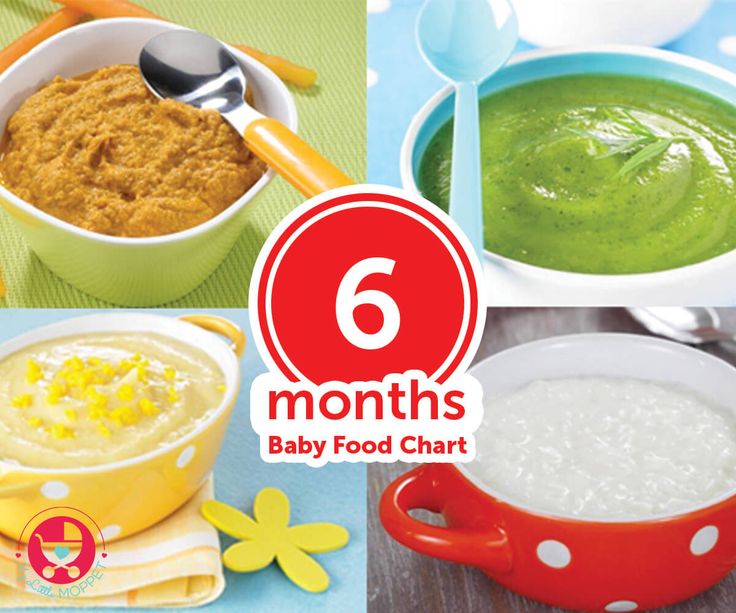 Do not remove skins.
Do not remove skins.
*You may remove skins however an infant over the age of 8 months old should be able to digest squash puree with skins on
Step 3: Steam until tender then place into your choice of appliance for pureeing and begin pureeing.
Step 4: Add water as necessary to achieve a smooth, thin consistency
Yams/Sweet Potato (4)6 months+
Learn why a Yam really is NOT a Yam
Vitamins A (24,877 mg ), C, Folate
Minerals:Potassium, Sodium, Selenium, Phosphorous, Magnesium, Calcium
Step 1: Wash and poke holes in sweet potato with fork then wrap sweet potatoes in tin foil – do not peel for baking/microwaving (you can also do this in the microwave – only use plastic wrap and cook for 8 minutes on high or until tender).
Step 2: Place in a 400 degree oven and bake for 30 minutes or until soft
OR
Step 1: Peel sweet potatoes and cut into small chunks
Step 2: Place chunks into a pan with just enough water to slightly cover potato
Step 3: “Steam” boil until tender, be sure to check on the water level.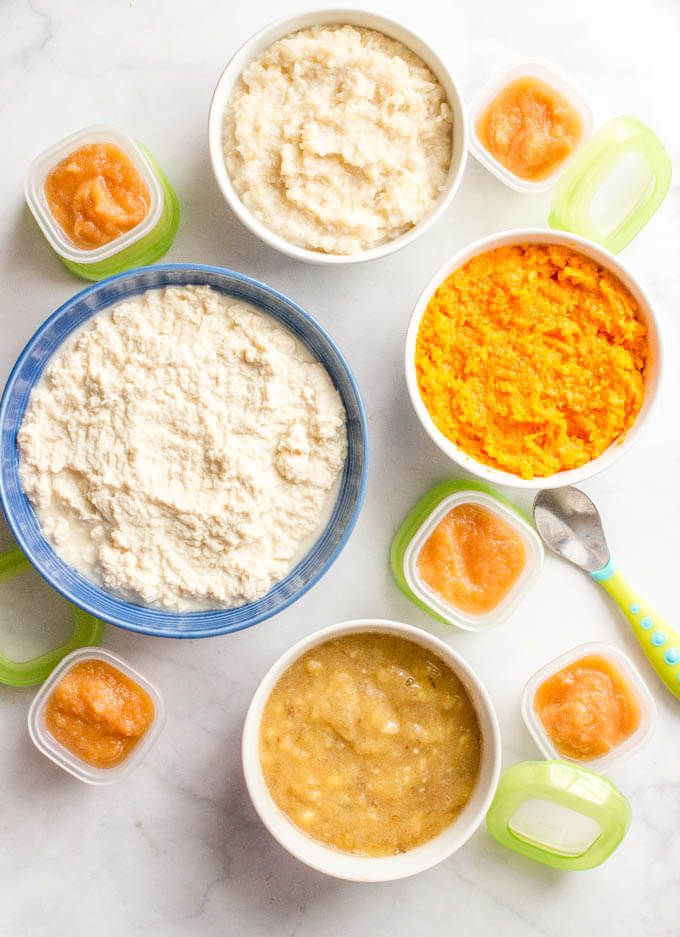
Step 4: Reserve any left over water to use for thinning out the sweet potatoes
Step 5: If you have baked your sweet potato, remove skins and use liquid from your preferred source
Step 6: Place sweet potato into your choice of appliance for pureeing and begin pureeing.
Step 7: Add the reserved water or other liquid as necessary to achieve a smooth, thin consistency
Remember, always consult with your pediatrician regarding introducing solid foods to your baby and specifically discuss any foods that may pose allergy risks for your baby.
These Stage 1 Homemade Baby Food Recipes are age appropriate for those babies who are between 4 and 6 months of age. Many babies start solid foods between 4 months and 6 months. Stage One fruits and veggies we have included are foods that your 4 month old baby who is a beginning eater will be able to tolerate. Of course, these recipes are also just yummy for babies who are older as well!
Of course, these recipes are also just yummy for babies who are older as well!
SHARE ON FACEBOOK SHARE ON PINTEREST
First Foods For Baby Made Easy – Happiest Baby Australia
By Happiest Baby Staff
Written by Gabrielle McPherson, MS, RDN, LDN
Starting solids with your baby is an exciting time…that requires patience, creativity, and an open mind! How—and what—you feed your baby today will establish benefits that can last a lifetime. But before you bust out the blender, grab a bib and spoon, and get pureeing, here are some tips and tricks to make sure your baby's culinary journey is a safe, successful, and delicious one!
Before you even think about Googling any baby puree recipes, it is essential to know if your baby is actually developmentally ready to eat solids. The Raising Children Network recommends starting solids once your infant is around 6 months old, though some babies may show signs of readiness earlier than this. No matter what, solids should not be introduced before your little one turns 4 months old. Some common signs of readiness include sitting up solo with good head, neck, and trunk control—and showing interest in gobbling up wha is on your plate. But remember, breastmilk and/or infant formula still should take up 95% of your infant’s nutrition. By 9 months, it is about 75% and it only reaches 50% by your kid’s first birthday.
No matter what, solids should not be introduced before your little one turns 4 months old. Some common signs of readiness include sitting up solo with good head, neck, and trunk control—and showing interest in gobbling up wha is on your plate. But remember, breastmilk and/or infant formula still should take up 95% of your infant’s nutrition. By 9 months, it is about 75% and it only reaches 50% by your kid’s first birthday.
-
Allergies: The Raising Children Network now recommends introducing high-allergy foods (like egg whites and mashed peanuts) between 4 and 6 months to help prevent future allergies. If your child has eczema, consult with your paediatrician beforehand.
-
Iron: While breastmilk does not have a ton of iron, what it does contain is very well absorbed. When babies start solids, however, that absorption dwindles. To help, pair iron-rich purees with those that contain vitamin C, which will enhance iron absorption.
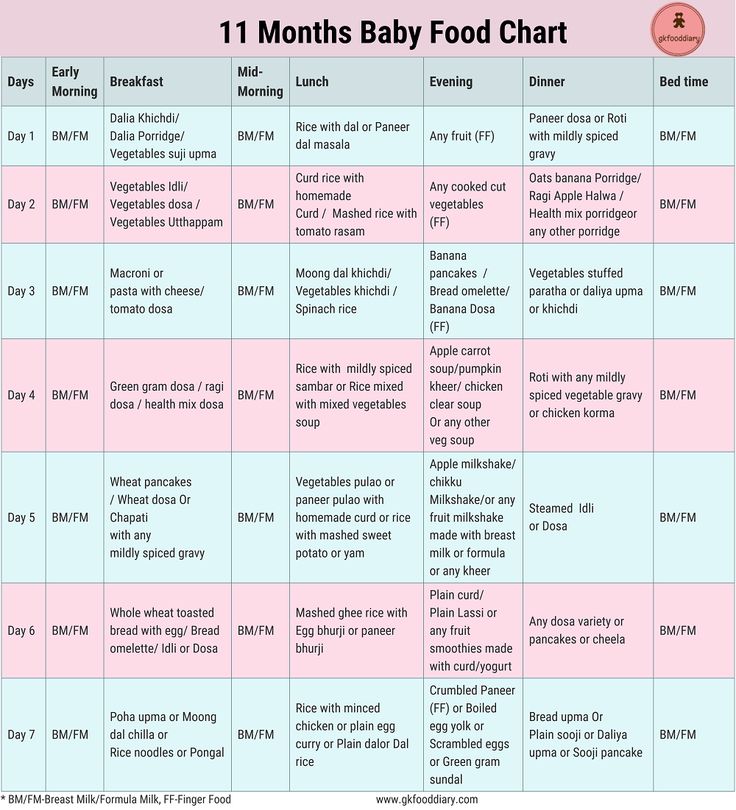
-
Rice cereal: Do not believe the infant cereal hype! Even when fortified with iron, baby rice cereal is still mostly starch and often tinged with arsenic. It is a better idea to stick with oats, barley, millet, farro, or amaranth.
-
Fruits vs. vegies: There is zero evidence that your little one will wind up disliking vegies if they taste fruit first!
-
3-day rule: Introduce just one food to your kid about every three days. That will help you determine the cause of any possible reactions, like diarrhoea or rash.
While it is tempting to dive right into your produce drawer and start blending, there are some guidelines you may want to follow. For instance:
It is true that shopping organically can be a bit pricey. But if you would like to incorporate some organic produce into your baby’s purees, it is smart to choose ones that tend to contain the most pesticide residue. These include:
These include:
- Apples
- Cherries
- Celery
- Grapes
- Green leafy vegetables
- Nectarines
- Peaches
- Pears
- Peppers
- Strawberries
- Tomatoes
Make purees using healthy liquids
Blend foods into purees using healthy and safe liquids that help to thin out new-to-baby foods.
- Water
- Breastmilk
- Prepared formula
- Low sodium meat or vegetable broth
Babies do not need salt or sugar added to their foods! After so many months on a 100% milk diet, babies are just now learning to appreciate the natural taste of foods. However, as your baby progresses with their eating, consider shaking things up by adding new, natural flavours to purees, such as small amounts of non-spicy herbs and spices like cinnamon, thyme, nutmeg, cilantro, and garlic.
Single-ingredient purees are the safest options for young babies. This will help you quickly spot any possible food allergies. (Offering mixed foods can create confusion on what ingredient caused your child's reaction.) Other hallmarks of stage one purees: They are thin, smooth, and easy for your baby to swallow.
This will help you quickly spot any possible food allergies. (Offering mixed foods can create confusion on what ingredient caused your child's reaction.) Other hallmarks of stage one purees: They are thin, smooth, and easy for your baby to swallow.
This easy-to-cook, high-in-fibre root vegetable will ensure your baby gets plenty of vitamin A to support the healthy development of their eyes. (It is also rich in vitamin C.) Try piercing your sweet potatoes and roasting at 200 degrees Celsius for 45 minutes for a nummy caramelised flavour. (Cool before peeling and pureeing.) When Baby is ready, add a pinch of cinnamon or nutmeg to change up the flavour and broaden your baby’s developing palate.
The potassium-rich starter food requires zero cooking. Score! Ripe banana puree is a tasty, convenient, affordable baby food that takes nothing more than a bit of fork-mashing. Baby will surely love it on its own, but will likely adore it when mixed with other fruit purees down the road.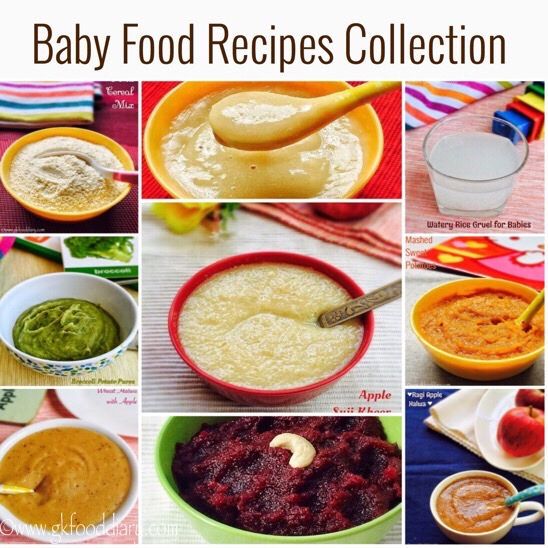 (Remember: Only single-ingredient purees to start!)
(Remember: Only single-ingredient purees to start!)
Babies' brains and bodies grow by leaps and bounds in their first year of life, and that growth needs to be supported by adequate nutrition. You know what is great for that? High-calorie avocados, which are bursting with essential healthy fats. Avocados do not need to be cooked or blended. A simple fork-mash will do. You will know your avocado is baby-ready when it is soft to touch without being mushy and its inside is a lush, bright green.
Oatmeal Puree
Fibre- and iron-packed oatmeal is a great first food for Baby! Iron plays a crucial role in making sure your baby’s body is well supplied with oxygen. And fibre keeps your little one’s digestion moving. Add 250 ml of old-fashioned oats to 500 ml of boiling water and simmer for about 5 minutes. After it has cooled, puree in the blender or food processor for 1-2 minutes, adding liquid as you go.
Many parents worry about offering meat to babies. But pureed meats, like iron-rich chicken, are totally safe—and healthy. Chicken is not only a good source of lean protein, it is packed with zinc, a mineral that helps your baby’s immune system function at its very best. FYI: You will need a powerful blender and a decent amount of liquid to puree your cooked, chopped, skinless breast meat into yummy baby food.
But pureed meats, like iron-rich chicken, are totally safe—and healthy. Chicken is not only a good source of lean protein, it is packed with zinc, a mineral that helps your baby’s immune system function at its very best. FYI: You will need a powerful blender and a decent amount of liquid to puree your cooked, chopped, skinless breast meat into yummy baby food.
After trying single ingredient foods, your baby may be ready to graduate to purees with more than one ingredient. Stage two purees are slightly thicker than stage one and can include a mix of fruits, vegies, grains, proteins, and yoghurt.
This constipation-fighting blend is rich in fibre from both the peas and pears. Peas also contain iron, calcium, and choline, an underrated nutrient that is necessary for brain function and memory. Along with fibre, pears are teaming with potassium and vitamin C. Simply peel and dice your pear and steam them along with peas for about 8 to 10 minutes. Once cool, blend away.
Once cool, blend away.
Pureed avocado and pineapple offer your baby a creamy tropical taste that will surely excite their taste buds! Avocados are full of omega-3 fatty acids, which are essential for your baby’s healthy brain development. And pineapple is stuffed with calcium, folate, and vitamin C…making it a sweet addition to your baby’s palate. Toss one avocado and about 150 ml of fresh or thawed frozen pineapple into the blender or food processor and puree.
Omega-3-rich salmon is soft and easy for babies to eat—and high in protein, calcium, and vitamin D. All important nutrients for Baby. And sweet potatoes are packed with potassium, fibre, folate, and more. To make this blend as easy as can be, go ahead and use canned salmon adding as much liquid as you need to come up with the just-right texture for your baby.
Lentils are fully loaded with lots of nutrients to support your ever-growing baby, including fibre, protein, iron, zinc, calcium, potassium, phosphorus, and folate. Sweet and juicy mangoes, on the other hand, offer lots of vitamins C and A, both necessary for a healthy immune system. (Mango’s vitamin C helps Baby absorb iron from the lentils.) Peel and chop your mango before giving it a quick steam and tossing it in the blender with your lentils. While most lentils need to soak before cooking, red lentils are an exception. Just boil them before you puree.
Sweet and juicy mangoes, on the other hand, offer lots of vitamins C and A, both necessary for a healthy immune system. (Mango’s vitamin C helps Baby absorb iron from the lentils.) Peel and chop your mango before giving it a quick steam and tossing it in the blender with your lentils. While most lentils need to soak before cooking, red lentils are an exception. Just boil them before you puree.
Protein-packed whole grain quinoa and red meat provide B vitamins necessary for Baby’s brain to function and keep your little one’s skin, hair, and nails healthy. Try cooking up (and draining the fat from) ground beef and blending it with an equal amount of already-made quinoa, which becomes naturally soft when cooked. Add vegie stock as needed to get the proper texture.
Plain, unsweetened whole milk yoghurt is full of calcium and makes a great source of protein for your baby. Blending in some blueberries will add vibrant colour, antioxidants and vitamin K. Bled up some flaxseeds to provide omega-3 fatty acids, fibre, and even more protein to their nutritious meal.
Bled up some flaxseeds to provide omega-3 fatty acids, fibre, and even more protein to their nutritious meal.
Take apple puree to the next level by blending it with peanut butter to provide your bub with a healthy dose of magnesium, protein, and choline. (Remember, the National Institute of Health (NIH) advises giving peanut-containing food to babies in the first year now recommends offering potential allergy foods like peanuts to babies to reduce their future risk, even noting that waiting can increase the likelihood of a reaction.) Peal, dice, steam your apples and blend once cool. Next, scoop some smooth, natural, sugar- and salt-free peanut butter into a bowl and mix with warm water until you have a uniform texture. Bring both blends together for some yum! (If you feel your infant may have a food allergy, always consult with your infant’s paediatrician.)
Craving more baby meal ideas?
Best Foods for Babies 6 to 9 months
Best Foods for Babies 10 to 12 months
Baby-led Weaning Ideas
Peanut Butter How-Tos
View more posts tagged, feeding
Have questions about a Happiest Baby product? Our consultants would be happy to help! Connect with us at customercare-au@happiestbaby. com.
com.
Disclaimer: The information on our site is NOT medical advice for any specific person or condition. It is only meant as general information. If you have any medical questions and concerns about your child or yourself, please contact your health provider.
From how many months can you give potatoes to babies
Home » Miscellaneous » From how many months can you give potatoes to babies
From how many months can you give mashed potatoes to a child?
Most children like potato dishes, so mothers who have begun to introduce complementary foods are always interested in knowing when it is possible to prepare mashed potatoes for the baby and how to give it to the baby in the right way.
Pluses
Potato has a positive effect on the digestive and cardiovascular system. This vegetable has a lot of potassium, iron, iodine, phosphorus and other elements, as well as organic acids, antioxidants and vitamins.
Most of the nutrients are stored not in boiled, but in baked potatoes, therefore, for children's purees, the vegetable is recommended to be baked.

Another plus of potato dishes is the pleasant taste that children love.
Read about the benefits of potatoes for children and adults in the program "Live Healthy". You will also learn that it is worth eating raw potatoes, which, unfortunately, is not accepted in our country.
Cons
- Potato tubers are rich in starch, which can cause allergies and digestive problems.
- Boiled potatoes have a very high glycemic index.
- If the mother did not pay attention to green spots on root crops, then there is a risk of solanine poisoning of the baby.
At what age is it better to give?
Babies who receive only mother's milk for food start to give potatoes from 6 months. The introduction of this vegetable into the diet of artificial babies is possible from 5 months, but it is better to postpone the first complementary foods until 6 months. Often acquaintance with potatoes occurs after the introduction of zucchini, cauliflower and broccoli into the children's menu. Chopped greens in mashed potatoes can be added from 10 months of age.
Chopped greens in mashed potatoes can be added from 10 months of age.
Opinion of E. Komarovsky
A well-known pediatrician recommends introducing vegetable complementary foods in the form of mashed potatoes after the baby gets used to sour-milk dishes and cereals.
According to Komarovsky, potatoes should be given to a baby from 8 months old, if the baby has already got at least one tooth. The doctor advises to start acquaintance with vegetables with decoctions, and then move on to mashed potatoes and a variety of soups.
Introduction to the diet
For the first time, the child should try mashed potatoes in an amount not exceeding a teaspoon. A baby who has responded normally to such a vegetable dish will increase the portion next time. If the mother noted any negative or warning signs, acquaintance with potatoes should be postponed.
How to choose?
For baby mashed potatoes, use small tubers that are free of spots and defects. It is best if mom can cook dishes from potatoes grown in her garden. If the mother is not sure about the quality of market or store potatoes, she can purchase canned food. In this case, a one-component product is preferable, in which salt and cream are not added. As part of the puree, with which the mother decided to introduce the baby, there should be only potatoes and water.
It is best if mom can cook dishes from potatoes grown in her garden. If the mother is not sure about the quality of market or store potatoes, she can purchase canned food. In this case, a one-component product is preferable, in which salt and cream are not added. As part of the puree, with which the mother decided to introduce the baby, there should be only potatoes and water.
Recipe for cooking at home
Potatoes can be baked, steamed or boiled with a lid on. Grind baked or boiled potatoes to a puree state, then add a little milk to the dish.
If this is the first sample of potatoes, then breast milk, a decoction in which the vegetable was boiled or infant formula should be added to the puree.
A little later, chopped potatoes can be combined with cow's milk. Oil (vegetable is better) should also be added to the potato dish.
Helpful Hints
- Soak potatoes in cool water before boiling. This will cause the loss of part of the vitamins, however, it will save the vegetable from both nitrates and part of the starch.
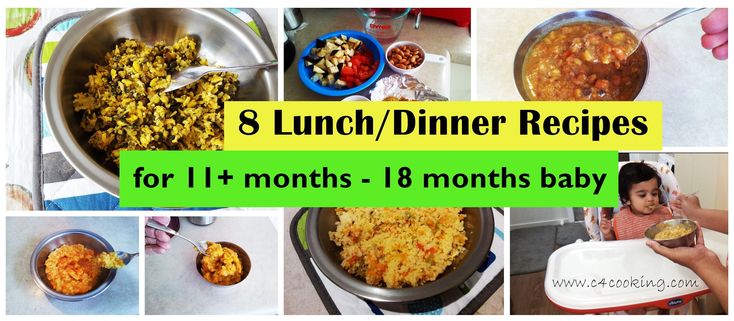
- It is best to boil a potato "in its uniform", so its useful substances will be preserved in greater quantities. Unpeeled potatoes can also be steamed. After removing the skin from it, the vegetable is crushed into gruel and given to the baby.
- It is preferable to mash the potatoes by hand, as there will be a lot of gluten in the dish after processing with a blender.
- The baby should only be given fresh mashed potatoes prepared by the mother before feeding.
- It is not advised to salt the first mashed potatoes that the baby tries.
- Due to the high amount of starch, potato dishes are recommended for young children only 2-3 times a week.
Find out if your child's weight is normal by using the following calculator.
When to give, health benefits and simple recipes
Last updated by
Babies grow so fast that they are ready to eat solid food before you know it. As a mother, you are skeptical about giving your child different foods. Have you experienced mothers who have told you that you can feed your baby potatoes while you are weaning? If yes, then you are probably wondering how much and in what form you can feed your baby with this vegetable. Well, you will find all the answers in this article. Read on to learn all about potatoes, their benefits, when to breastfeed your baby, and some easy recipes you can make in no time.
As a mother, you are skeptical about giving your child different foods. Have you experienced mothers who have told you that you can feed your baby potatoes while you are weaning? If yes, then you are probably wondering how much and in what form you can feed your baby with this vegetable. Well, you will find all the answers in this article. Read on to learn all about potatoes, their benefits, when to breastfeed your baby, and some easy recipes you can make in no time.
When to introduce potatoes to a child's diet
Potatoes are available in almost all parts of the world. They are rich in carbohydrates and provide enough energy for your growing baby. It is one of the safest vegetables to give to a child at an early age. Boiled or steamed potatoes are a decent source of more than just complex carbohydrates; but also some complex proteins and vitamin C. To avoid loss of nutrients, potatoes should not be fried.
Let's look at the nutritional value of potatoes.
So why are potatoes good for your child? Let's find out.
Benefits of potatoes for babies
Potatoes are a great energy food for your baby.Here are some more benefits your baby can get from potatoes:
1. Good for your baby's gastrointestinal health your child's gastrointestinal tract, only if consumed without frying. Potatoes promote the growth of beneficial bacteria. A significant amount of alkaline sugar in potatoes reduces the level of acid in the child's body and thus keeps the acidity in check.
2. Reduces the risk of infection
Some varieties of potatoes, such as red-fleshed potatoes, contain anthocyanins, a pigment with antioxidant properties. They help fight various diseases. Therefore, adding potatoes to a child's diet can reduce the risk of infections.
3. Good for your baby's skin
Potato contains starch, vitamin C and various enzymes that protect and nourish the skin.
After reading about the benefits of potatoes for babies, we are sure that you will want to feed your baby with this energy food. But there are certain things you should keep in mind before taking that spoonful of mashed goodness.
But there are certain things you should keep in mind before taking that spoonful of mashed goodness.
things to remember when feeding your baby potatoes
Potatoes are good for babies. However, before feeding potatoes to the baby, the following points should be noted:
1. Thoroughly peel and clean the potatoes
Potatoes are grown underground, so all dirt and pesticides must be removed before giving them to a child. Be sure to wash it thoroughly before cooking.
2. Start Small
Babies love the taste of potatoes, but that doesn't mean you feed them too much. So just start with a few tablespoons of well-done mashed potatoes.
3. Give steamed or baked potatoes
Include steamed or baked potatoes in your child's diet. This is because when you boil potatoes and drain the water, most of their nutrients are lost. Potatoes can be steamed, mashed and given to a child.
Video: How to make mashed potatoes for babies?
Here's how to make mashed potatoes with steamed potatoes:
Baby mashed potatoes recipe
It's best to give babies mashed potatoes, as they can be chewed with gum when babies can't chew their food. Here's how you can make mashed potatoes.
Composition
Method
- Take a potato, wash it thoroughly and remove the skin.
- Cut potatoes into small pieces.
- Take the steamer basket and place the pieces in it. Pour water into a saucepan (1/4 of the saucepan).
- Place the steam basket in the pot and cover it with a lid.
- Steam potatoes; keep checking the water. Add more water if necessary.
- When the potatoes are fully cooked (soft and mashable), remove from the heat and puree in a blender to the desired consistency.
 Add remaining water if necessary.
Add remaining water if necessary. - Your child's mashed potatoes are ready.
If your child is no longer eating plain mashed potatoes and you are introducing more foods to his diet, you can also try some of the recipes below.
Other potato recipes for babies
Here are some potato recipes you can try with your child. If you like, you can add other vegetables along with the potatoes to give them a different flavor and texture, and to add nutritional value to the dish.
1. Broccoli and Mashed Potatoes
This is a mashed potato recipe with a twist and is definitely a nutritious option for your baby. Here's how to do it.
Composition
- 1 medium potato
- 1/4 cup broccoli florets
Method
- Take a potato, wash it, peel it and cut it into small pieces.
- Take the broccoli florets and wash them thoroughly.
- Steam the broccoli florets and potatoes in the steamer.

- After the vegetables are cooked, grind them into a smooth puree.
- Water can be added if necessary to make a smooth paste.
- Cool puree to room temperature before feeding.
2. Mashed potatoes and courgettes
This recipe is ideal for baby food for babies over 6 months old.
Ingredients
- 1 acorn or butternut squash
- 3-4 medium potatoes
Method
- Take the courgettes and cut them into small pieces.
- Place them in the steamer and steam until done.
- You can also roast courgettes and potatoes in the oven.
- When everything is ready, grind them until smooth and feed the baby.
3.Beetroot and Potato Puree
This recipe is full of beetroot and potato flavors. They are easy to prepare and are another healthy way to feed potatoes to your baby.
Composition:
- Medium potatoes
- One medium beetroot
Method:
- Wash potatoes and beets thoroughly and peel them.

- Cut them into small pieces.
- Pressure cook chopped vegetables (2 to 3 whistles).
- Mash the vegetables in a mixer / blender.
- Add water if necessary to make a smooth paste.
- Let the puree cool completely before feeding the baby.
Potatoes are usually one of the first foods for babies. You can include this amazing vegetable in your baby's diet as soon as you start introducing him to solid foods (after he is six months old). If you want to include potatoes in your baby's diet, it's a good idea to check with your doctor first. And when you do, feed the vegetable puree or puree to your baby. However, keep in mind that you do not feed him in excess, as this can lead to health problems and weight loss.
Links and resources: webmd, homemadebabyfoodrecipes, mylittlemoppet
Also read: Baby sweet potatoes
.
Do they cause gestational diabetes?
Rosie liked potatoes: mashed, baked or fried. She used them regularly until she found out she was pregnant. And then she stopped because she wasn't sure they were right for her and her baby. Rosie also worried that potatoes could increase her risk of gestational diabetes.
She used them regularly until she found out she was pregnant. And then she stopped because she wasn't sure they were right for her and her baby. Rosie also worried that potatoes could increase her risk of gestational diabetes.
Was Rosie right? Are potatoes bad for pregnant women? In this post, Momjunction tells you all about eating potatoes during pregnancy, the benefits and risks of eating them, and the best way to eat them for nutritional value.
Is it good to eat potatoes during pregnancy?
Moderate consumption of potatoes is good for health during pregnancy. Your uterus' main source of energy is glucose, which is found in carbohydrates like potatoes. According to the Swiss Association for Nutrition (SAN), three to four servings of carbohydrates per day are safe during pregnancy. This includes potatoes, rice, cereals, bread, and other whole grains.
back to top
What are the chances that potatoes will cause gestational diabetes (GD)?
Potatoes are high in starch, which is rapidly absorbed by the body and can affect glucose metabolism.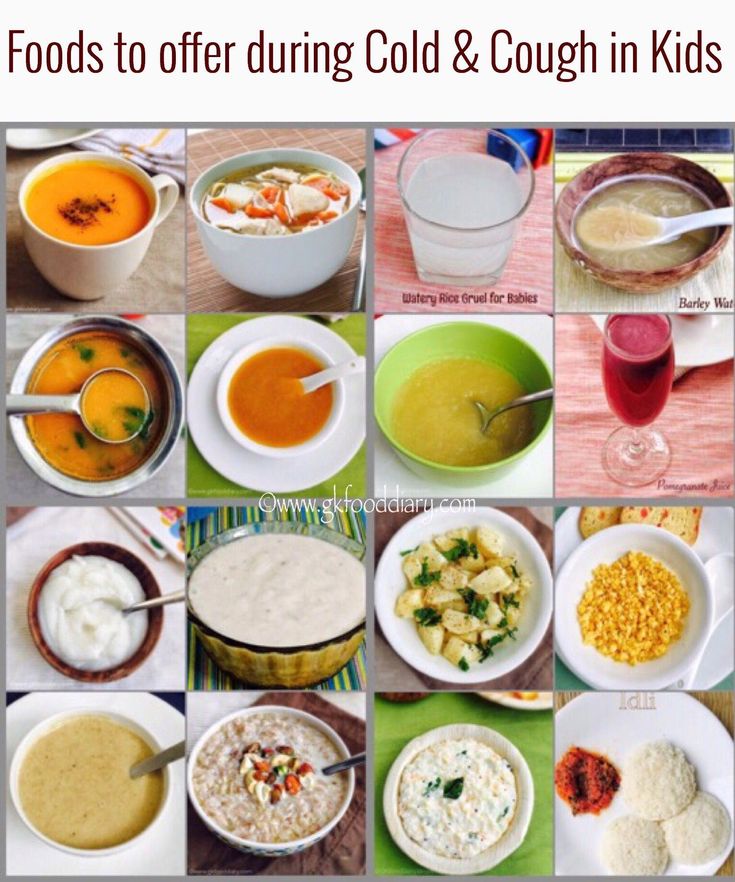 Studies also show that potato consumption increases plasma glucose concentrations and increases the risk of developing type 2 diabetes (1).
Studies also show that potato consumption increases plasma glucose concentrations and increases the risk of developing type 2 diabetes (1).
Study highlights the importance of moderating potato consumption and replacing it with other vegetables, whole grains and legumes to reduce the risk of HD. Compared to five or even three servings, one serving of potatoes a week significantly reduces the risk of gestational diabetes (2).
Excessive consumption of potatoes before pregnancy is also associated with an increased risk of HD.
Back to top
[Read: Sweet potatoes during pregnancy ]
What are the health benefits of eating potatoes during pregnancy?
Potatoes are rich in nutrients. Here are some benefits of eating potatoes during pregnancy.
1. Folic acid prevents neural tube defects.
Potatoes are rich in folic acid, which contributes to the development of the fetal nervous system. Thus, the risk of diseases of the brain and spinal cord is reduced.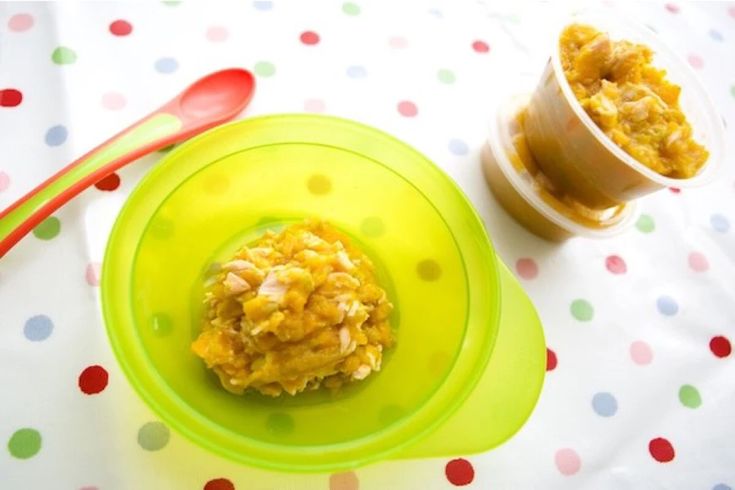 Folic acid-rich foods in early pregnancy may also prevent miscarriage (3).
Folic acid-rich foods in early pregnancy may also prevent miscarriage (3).
2. Reduces gas and acidity.
Potatoes are very useful for those who have problems with digestion. If cooked properly, they will help reduce gas and acidity. A serving of puree helps (4).
3. Healthy weight gain
If you are underweight, potatoes can help you achieve ideal and healthy weight gain during pregnancy (5).
4. Fights cholesterol
Potatoes contain soluble fiber and vitamin C, which help fight cholesterol (6).
5. Increases immunity
Baked potatoes are a rich source of vitamin C, which heals wounds and boosts immunity. It also improves the ability to absorb iron from other foods (7).
6. Reduces the risk of cardiovascular disease.
Potato skin contains high levels of potassium, which reduces the risk of heart attack and hypertension. One medium serving of a baked potato with skin contains 926 mg of potassium (8).
7.
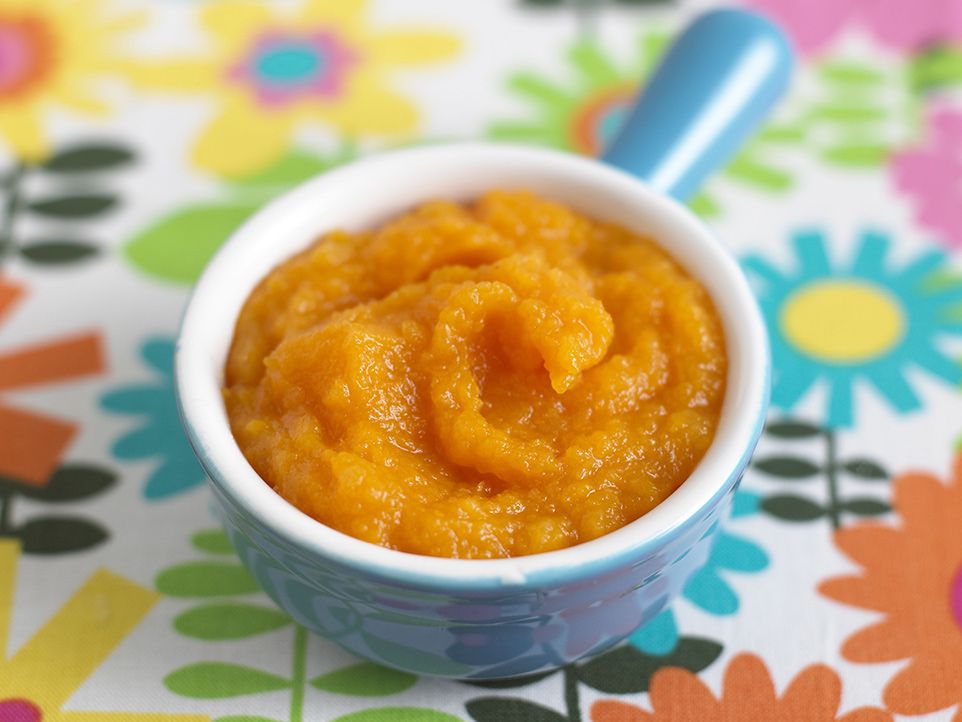 Treats puffy eyes
Treats puffy eyes Bags under the eyes are common during pregnancy. Simply grate a raw potato and apply to eyes for about 10-15 minutes. Cools eyes and relieves swelling (9).
8. Helps fetal development
Potatoes are a good source of vitamins (A and C) and minerals such as iron, magnesium, potassium, and calcium, which support fetal growth and development (10).
It is important to weigh the benefits and risks of what you eat during pregnancy. This is true for potatoes as well.
Back to top
[Read: Food during pregnancy ]
What are the risks of eating potatoes during pregnancy?
Here are some of the potential side effects of potatoes:
- Causes gastrointestinal problems: Green potatoes contain glycoalkaloids, alpha-solanine and alpha-chaconine. These compounds can cause toxicity if consumed in excess and lead to gastrointestinal problems such as vomiting and diarrhea, which can affect fetal development (11).
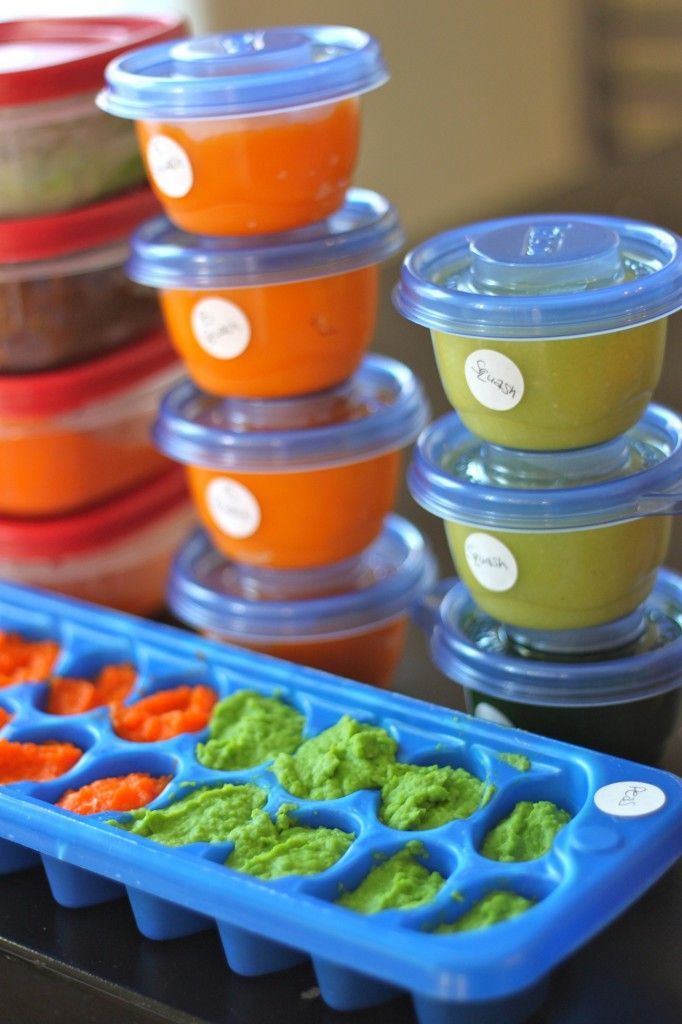
- Risk of birth defects: Eating too many green potatoes also causes certain birth defects such as spina bifida and anencephaly (12).
- Causes gestational diabetes: Women who eat too many potatoes are at higher risk of developing gestational diabetes and type 2 diabetes. Babies born to women with gestational diabetes may be larger than average, have difficulty breathing, low blood pressure, and risk of death after childbirth (13).
Moderate consumption of potatoes will help avoid these side effects. It also matters how you cook them before eating them.
back to top
What are the safe ways to include potatoes in your pregnancy diet?
During pregnancy, you can try cooking potatoes in different ways to suit your taste.
- Baked potatoes without cheese
- Combining potatoes with other vegetables, herbs, fish and meat
- Potato soup or stew
- Potato salad or mashed potatoes with egg, vegetables and spices
Here are a couple of potato recipes you can try.
1. Potato-rally soup
You will need:
- 1 cup of small cubes
- ½ glass of dried grass
- ¼ cup of Luke, thinly trimmed 9002 9002 black pepper and salt for taste
- 2 tablespoons grated carrots for garnish
Like:
- Add the oil and onion to the pressure cooker and sauté them for a minute over medium heat.
- Add potatoes and sauté for one to two minutes.
- Add about a glass and a half of water, mix and cook for three whistles
- Turn off the whistle and let off steam. Allow the mixture to cool before turning it into a smooth puree.
- Pour the contents into a saucepan. Add dried herbs, pepper, salt and half a glass of water.
- Mix thoroughly and cook over medium heat. Garnish with carrots and serve hot.
Preparation time: 25 min
portions: 2
[Read: Tomatoes size, cooked and diced How to cook: Cooking time: 15 min Check with your health care provider before planning to eat potatoes in any form. For more questions about potatoes during pregnancy, see our FAQ. Back to Top Craving for potatoes means you are carrying a boy. However, this is pure folklore and has no scientific evidence. Moderate and occasional consumption of potato chips, which are considered unhealthy foods, is fine if you do not have any medical conditions such as gestational diabetes or hypertension (14). Green sprouted potatoes contain high concentrations of glycoalkaloids, which are toxic to your nervous system. They affect the body's ability to regulate acetylcholine, which stimulates nerve impulses. Therefore, avoid eating potatoes with partially or completely green skins (15). [Read: Radishes during pregnancy ] Potatoes are perhaps the most commonly used vegetable in any diet and cannot be completely avoided. Therefore, be careful when including potatoes in your diet and eat them in moderation to prevent the risks it poses during pregnancy. Back to top How do you plan to include potatoes in your pregnancy diet? Tell us about it in the comments section below. . Your baby is six months old and it's time to try solid foods (NHS 2018a). Some families adhere to the principle of weaning infants, while others find that their infants are more satisfied with puree from a spoon. We explain the best foods to feed your child in the coming weeks and months to help him get off to a good start. At six months, your baby is still getting most of her nutrition from breast milk or formula (NHS 2018a). However, milk alone will not give him everything he needs (NHS 2018a). In particular, your baby's iron buildup during pregnancy may be low, so she needs solid foods to make sure she gets enough (RCN 2018, Ziegler et al 2014). By the time your baby is six months old, he will probably show signs that he is ready for solid foods, such as:

Servings: 8 Frequently Asked Questions
1. Does craving potatoes during pregnancy say anything about the sex of the baby?
2. Can I eat potato chips during pregnancy?

3. Is it safe to eat green sprouted potatoes?
Recommended articles:
What foods to introduce when
 Every child is different, so you don't know how your child will react to this new experience. It may take time for him to get used to the different textures and flavors, or he may get used to it right away.
Every child is different, so you don't know how your child will react to this new experience. It may take time for him to get used to the different textures and flavors, or he may get used to it right away. Why is there not enough milk anymore?
four months, most experts still recommend waiting up to six months before giving your baby solid food (NHS 2018a).
(NHS nd, a) 
What are the best first wean foods for solid food?
When your baby is six months old, they will be able to eat most of the same food as the rest of the family (NCT 2017). A great place to start is fruits and vegetables (NCT 2017) such as:
- boiled and chilled vegetables such as potatoes, sweet potatoes, sweet potatoes, butternut squash, parsnips, carrots, squash, broccoli or cauliflower
- soft fruits : peach, melon, banana, avocado, strawberry, orange or satsuma slices, blueberries or grapes (always cut small round fruits in half before offering them to a child to reduce the risk of choking)
Harder fruits such as apples and pears can also be given. Peel them and make sure they are ripe and starting to soften before offering them to the child. If not, you can cook them to soften them up a bit.
You can also try mixing different fruits and vegetables together to create new flavor combinations (RCN 2018). Or offer your child multiple bites of different foods at once so they can explore and eat what they like (RCN 2018).
Or offer your child multiple bites of different foods at once so they can explore and eat what they like (RCN 2018).
Baby rice or other cereal mixed with your baby's regular milk is another great option for your baby's first meal (NHS 2018a). Look out for iron-fortified cereal as this will help make sure your baby gets enough of it important nutrient (NCT 2017, RCN 2018).
First Foods
Check out these health care professional tips for starting solid foods with your baby. Additional Weaning Videos
What other weaning foods can I start at six months?
It would be a good idea to experiment with a wide range of products right from the start (ITF 2014a). Introducing your child to many different tastes and textures now will help him learn to enjoy a varied and balanced diet (ITF 2014a). Here are some great options for your baby:
- pasta, rice, breadsticks, unsalted crackers, couscous and quinoa.

- Soft cooked meat, poultry and fish (NHS 2018a). Be sure to cook food thoroughly and remove bones. Fatty fish like mackerel, salmon, and sardines are great for your baby, but may contain low levels of toxins, so limit servings to one or two per week (BNF 2009). There are several types of fish that are not safe for your child due to their high mercury content. For more information, see the section on foods to avoid.
- Hard-boiled eggs. If the eggs bear the red British Lion quality stamp, they can also be served liquid or even raw (e.g. in homemade mayonnaise or mousse) (NHS 2018b). But if you don't have a lion stamp, make sure it's fully cooked before giving it to your child (NHS 2018b).
- Full-fat dairy products such as yogurt, cheese, cheese potatoes or custard. It is okay to use some cow's milk (goat's or sheep's) in your child's food, but don't offer it as a main drink until they're one year old.(NHS 2018a)
- Beans and legumes such as lentils, split peas, chickpeas, tofu and hummus.
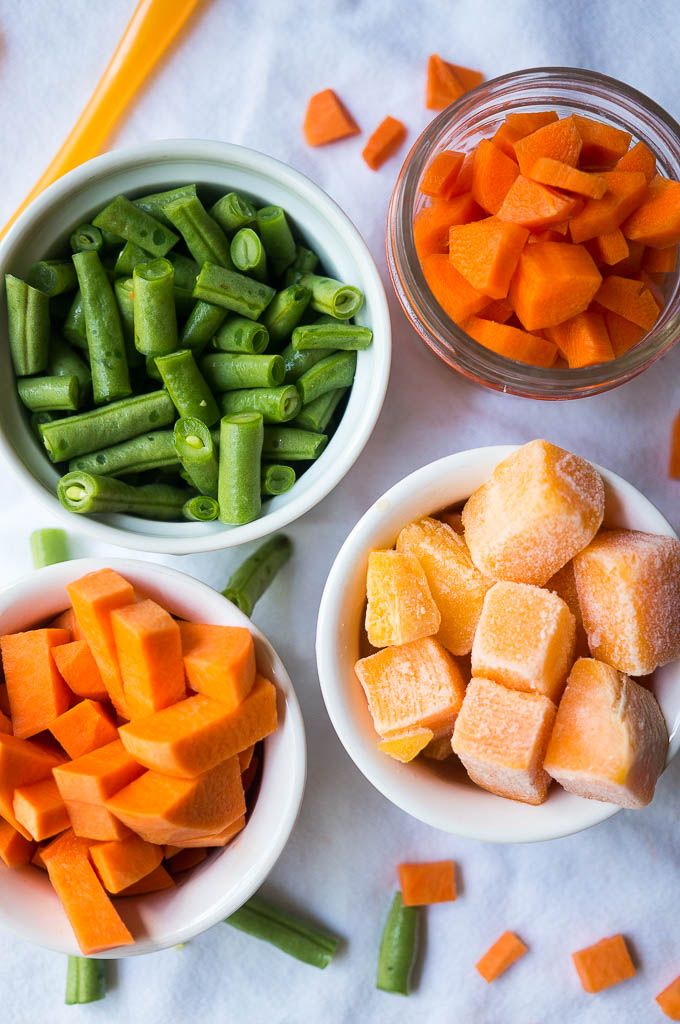 These foods are especially important if you are raising your child as a vegetarian or vegan as they are an excellent source of protein (NHS 2016a).
These foods are especially important if you are raising your child as a vegetarian or vegan as they are an excellent source of protein (NHS 2016a). - Walnut products. Don't give your child whole nuts because of the risk of choking, but it's OK for them to eat smooth peanut butter (ITF 2014b).
What texture should my baby's first meal have?
It's entirely up to you whether you serve your baby's first foods mashed, pureed, or cut into soft pieces for him to eat with his fingers (NHS 2018a, RCN 2018). Don't worry if he doesn't have teeth yet, as he can easily chew soft food with hard gums (ITF 2014a). Try experimenting with different textures and flavors to see what your child likes.
If you start with purees, try to move to purees or solids as soon as possible (NHS 2018a). This will help your child learn to chew, and exercising the jaw muscles is also good for language development (ITF 2014a).
Remember that food is a whole new experience for your little one and the first taste of a new food can surprise him! He may have many funny faces, but this does not necessarily mean that he does not like food - he can just get used to it (RCN 2017). Therefore, it is worth offering new food several times to give the child the opportunity to get used to it (RCN, 2017 ).
Therefore, it is worth offering new food several times to give the child the opportunity to get used to it (RCN, 2017 ).
How much should my child eat?
When you first start giving your child solid food, offer only a few spoonfuls or bites of food once a day (NHS 2018a). The most important thing is simply to get your child used to food (NHS 2018a). Try not to worry about how much he eats, as he will still get most of his nutrients from breast milk or formula (NHS 2018a).
Over time, your baby's appetite will naturally increase and you can start giving her more food (NHS 2018a). By the time your child reaches their first birthday, they should be eating three meals a day and snacking between meals (NHS 2018a).
Every child is different and some need more food than others. As long as your child is gaining weight at a healthy rate, there is nothing to worry about. If you are concerned that your child is eating too much or too little, talk to your doctor.
What should my child drink?
Breast milk or formula should be your baby's main drink until their first birthday (NHS 2018c). From six months onwards, you can also start giving the following drinks with meals if you wish:
- Tap water. From six months on, it does not need to be pre-boiled, unless you are using it to prepare formula. Do not give your child bottled water, as it may contain too much sodium (salt) for him.
- Diluted fruit juice. Mix one part juice with 10 parts water. Undiluted juice contains too much sugar and is too acidic for your child's teeth.
(NHS 2018c)
Offer these drinks in a non-valved cup or glass to help your child learn to swallow rather than suck (NHS 2018c). It is also much better for their teeth than sucking from a bottle or cup with valve (NHS 2018c). Try to be completely bottle-free by his first birthday (NHS 2018c).
When your child is one year old, you can also give him full-fat cow's milk as his main drink. Stick to whole milk because it has more of the calories and vitamins your baby needs (NHS 2018c).
Stick to whole milk because it has more of the calories and vitamins your baby needs (NHS 2018c).
Are there foods that should not be given to a child?
It is best to avoid the following foods and drinks as they are not safe for your six month old baby:
- Honey. Even if he coughs, your child should not eat honey until it becomes a cough. Rarely, it may contain bacteria that can make babies seriously ill (NHS 2018b).
- Whole nuts. Do not give them to your child until he is five years old because they can cause choking to small children. However, smooth peanut butter is good (NHS 2018b).
- Certain fish. Avoid shark, swordfish and marlin as they may contain high levels of mercury (NHS 2018b). Also avoid raw shellfish, which can cause food poisoning in your child (NHS 2018b).
- Some cheeses. Cheeses made from unpasteurized milk may cause food poisoning in children.
 Do not give your child mature cheeses such as brie or camembert, or blue-veined soft cheeses such as roquefort, unless they are fully cooked (NHS 2018b).
Do not give your child mature cheeses such as brie or camembert, or blue-veined soft cheeses such as roquefort, unless they are fully cooked (NHS 2018b). - Tea or coffee. (NHS 2018c) Tannins in tea or coffee can prevent your child from properly absorbing iron from food (Brown, 2017), and caffeine can interfere with sleep (Healthline 2015).
- Sweet drinks. Sweet drinks like flavored milk, squash and sodas are bad for your child's teeth (NHS 2018c). Even drinks containing sweeteners can encourage your child to develop a sweet tooth, so they are best avoided too (NHS 2018c). Beware of drinks sold as "fruit drinks" or "juice drinks" - they are often high in sugar and low in vitamins or minerals (NHS 2018c).
It is also recommended that you limit the amount of sugar, salt, and saturated fat your child has (NHS 2018b). Do not add salt or sugar to his meals, and sometimes add sugary or fatty foods as a treat (NHS 2018b).
What about food allergies?
If your family has allergies, asthma, or eczema, your child may be more likely to develop food allergies. In this case, it is worth asking your GP or health visitor for advice before offering any solid food to your child (NHS nd, b). She will be able to give you advice on how to safely add new foods to your child's diet.
Even if your family does not have allergies, it is recommended that you try the foods most likely to cause a reaction one at a time (NHS nd, b). This way, if your child does have a reaction, it will be easier to determine what caused it (NHS nd, b). Start with a very small amount. If your child tolerates these foods well, continue offering them as part of their regular diet (NHS nd, b).
The most common foods that can cause an allergic reaction are:
- cow's milk
- eggs
- foods containing gluten, such as wheat, barley and rye
- fish and shellfish
- peanuts and seeds 904 and2 seeds 904 e.
 g. sesame seeds (often used in hummus)
g. sesame seeds (often used in hummus) - soy (tofu)
(NHS nd, b)
Weaning recipes and additional information
Last reviewed: March 2019
References
BNF.2009. schoolchildren. British Nutrition Foundation, Nutrition Science. www.nutrition.org.uk [Accessed February 2019]
Brown MJ. 2017. Do coffee and caffeine inhibit iron absorption? Healthline, Nutrition. www.healthline.com [Accessed February 2019]
Healthline. 2015. Ask the Experts: When Can Kids Start Drinking Coffee? Healthline. www.healthline.com [Retrieved February 2019]
ITF. 2014a. Developmental stages in infant and young child feeding. Forum for Babies and Toddlers Newsletter 3.5. www.infantandtoddlerforum.org [Retrieved February 2019]
ITF. 2014b. Weaning - learning to love new flavors and textures. Babies and Toddlers Forum, Advice and Advice for Parents. www.infantandtoddlerforum.org [Retrieved February 2019]
www.infantandtoddlerforum.org [Retrieved February 2019]
NCT. 2017. Introducing the child to solid food. NCT, Baby & toddler. www.nct.org.uk [Retrieved February 2019]
NHS. nd, a. Ready or not? NHS, Start4Life, Weaning. www.nhs.uk [Retrieved February 2019]
NHS. nd, b. Safe Weaning NHS, Start4Life, Weaning. www.nhs.uk [Retrieved February 2019]
NHS. 2016a. What to feed small children . NHS Health A to Z www.nhs.uk [Retrieved February 2019]
NHS. 2018a. Your baby's first solid food . NHS Health A to Z. www.nhs.uk [Accessed February 2019]
NHS. 2018b. Foods not to give to infants and young children . NHS Health A to Z. www.nhs.uk [Accessed February 2019]
NHS. 2018c. Drinks and cups for babies and toddlers . NHS Health A to Z. www.nhs.uk [Accessed February 2019]
RCN. 2018. Introduction to solids. Raising Children Network (Australia), Solids & Drinks. Rainchildren.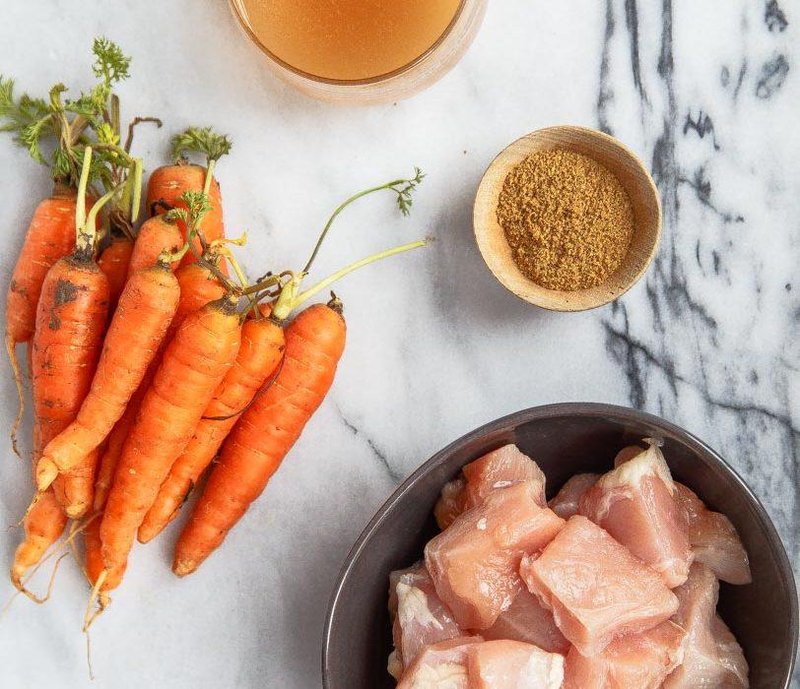 net.au [Accessed February 2019]
net.au [Accessed February 2019]
Ziegler EE, Nelson SE, Jeter JM. 2014. Iron stores in infants during the first year of life. Nutrients 6 (5): 2023-34
.
feed 9 billion | National Geographic
Step One: Freeze the Agriculture Track
For most of history, whenever we needed to produce more food, we simply cut down forests or plowed up grasslands to build more farms. We have already cleared an area roughly the size of South America for crops. In order to raise cattle, we seized even more land - an area about the size of Africa. The traces of agriculture have led to the loss of entire ecosystems around the world, including the prairies of North America and the Atlantic forests of Brazil, and deforestation continues at an alarming rate. But we can no longer afford to increase food production through agricultural expansion. Swapping rainforest for farmland is one of the most damaging actions we do to the environment, and rarely done to benefit the world's 850 million people who are still hungry.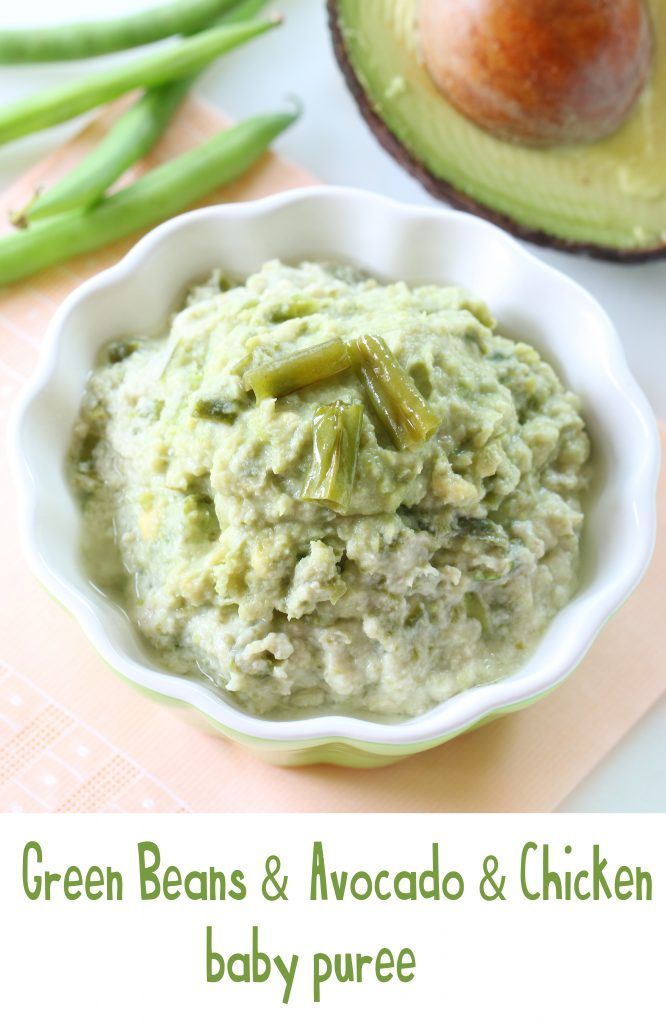 Much of the land cleared of farmland in the tropics does not contribute much to the world's food security, and is instead used to grow cattle, soybeans for livestock, timber, and palm oil. Preventing further deforestation should be a top priority.
Much of the land cleared of farmland in the tropics does not contribute much to the world's food security, and is instead used to grow cattle, soybeans for livestock, timber, and palm oil. Preventing further deforestation should be a top priority.
Step Two: Grow more on the farms we have
Beginning in the 1960s, the green revolution increased crop yields in Asia and Latin America by using better crop varieties and more fertilizer, irrigation, and technology, but with more environmental costs. The world can now turn its attention to increasing yields on less productive farmlands, especially in Africa, Latin America and Eastern Europe, where there is a “yield gap” between current levels of production and those that are possible with improved farming practices. Using high-tech precision farming systems, as well as approaches borrowed from organic farming, we could increase yields in these places several times.
Step Three: Use Resources More Efficiently
We already have ways to achieve high yields and significantly reduce the environmental impact of conventional farming. The Green Revolution was based on the intensive and unsustainable use of water and fossil fuel-based chemicals. But commercial agriculture has begun to make huge strides, finding innovative ways to apply fertilizers and pesticides more targetedly with computerized tractors equipped with advanced sensors and GPS. nearby water bodies.
The Green Revolution was based on the intensive and unsustainable use of water and fossil fuel-based chemicals. But commercial agriculture has begun to make huge strides, finding innovative ways to apply fertilizers and pesticides more targetedly with computerized tractors equipped with advanced sensors and GPS. nearby water bodies.
Organic farming can also significantly reduce the use of water and chemicals - by using cover crops, mulch and compost to improve soil quality, conserve water and store nutrients. Many farmers have also become smarter about water, replacing inefficient irrigation systems with more precise methods such as subsurface drip irrigation. Advances in both conventional and organic farming can give us more yield per drop from our water and nutrients.
Step Four: Switching Diets
It would be a lot easier to feed nine billion people by 2050 if more of the crop we grew went into people's stomachs. Today, only 55 percent of the calories consumed by the world's crops directly feed people; the rest is fed to livestock (about 36 percent) or converted into biofuels and industrial products (about 9 percent). While many of us consume meat, dairy, and eggs from feedlot-raised animals, only a small fraction of the calories in livestock feed end up in the meat and milk we consume. For every 100 calories of grain we feed animals, we only get about 40 new calories from milk, 22 calories from eggs, 12 calories from chicken, 10 calories from pork, or 3 calories from beef. Finding better ways to grow meat and switching to less meaty diets - even a simple switch from grain-based beef to meat like chicken, pork or pasture-raised beef - could free up a significant amount of food worldwide. Since people in developing countries are unlikely to eat less meat in the near future, given their newfound prosperity, we can first focus on countries that are already on a meat-based diet. Reducing the use of food crops for biofuel production could also go a long way towards increasing affordability. food.
While many of us consume meat, dairy, and eggs from feedlot-raised animals, only a small fraction of the calories in livestock feed end up in the meat and milk we consume. For every 100 calories of grain we feed animals, we only get about 40 new calories from milk, 22 calories from eggs, 12 calories from chicken, 10 calories from pork, or 3 calories from beef. Finding better ways to grow meat and switching to less meaty diets - even a simple switch from grain-based beef to meat like chicken, pork or pasture-raised beef - could free up a significant amount of food worldwide. Since people in developing countries are unlikely to eat less meat in the near future, given their newfound prosperity, we can first focus on countries that are already on a meat-based diet. Reducing the use of food crops for biofuel production could also go a long way towards increasing affordability. food.
The world needs more
By 2050, the world's population is likely to increase by more than 35 percent.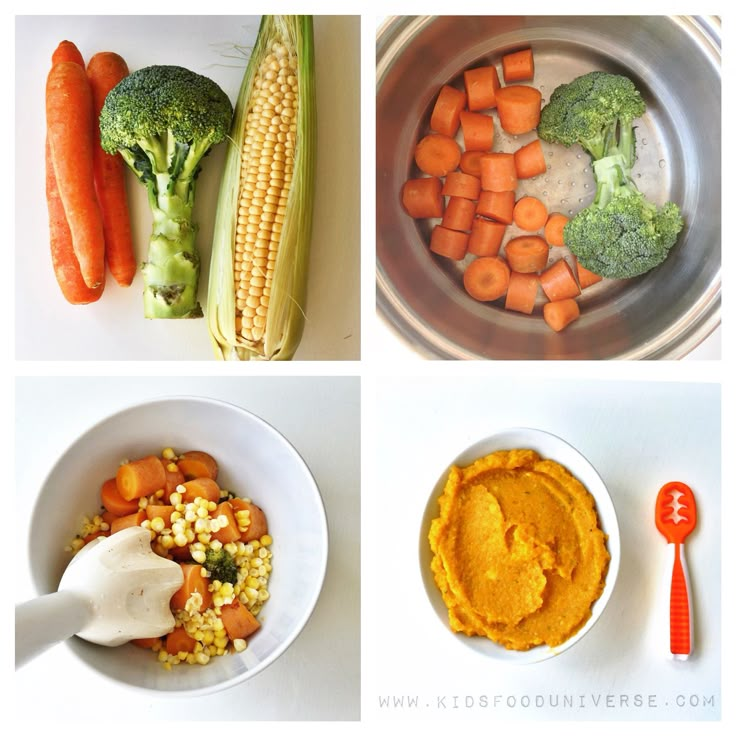
To feed this population, it is necessary to double the production of agricultural crops.
Why? Production will have to far outstrip population growth as the developing world becomes wealthy enough to eat more meat.
Step Five: Reduce Waste
It is estimated that 25 percent of the world's food calories and up to 50 percent of the total food weight are lost or wasted before they can be consumed. In wealthy countries, most of this waste is found in homes, restaurants or supermarkets. In poor countries, food is often lost between the farmer and the market due to unreliable storage and transportation. Consumers in developed countries can reduce waste by taking simple steps such as serving smaller portions, eating leftovers, and encouraging cafeterias, restaurants and supermarkets to develop measures to reduce waste. Of all the options for increasing food availability, waste management will be one of the most effective.
Taken together, these five steps could more than double the world's food supply and drastically reduce the environmental impact of agriculture around the world. But it won't be easy. These decisions require a major change in thinking. For most of our history, we have been blinded by an over-the-top imperative: more, more, more in agriculture - clear more land, grow more crops, use more resources. We need to strike a balance between producing more food and sustaining the planet for future generations.
But it won't be easy. These decisions require a major change in thinking. For most of our history, we have been blinded by an over-the-top imperative: more, more, more in agriculture - clear more land, grow more crops, use more resources. We need to strike a balance between producing more food and sustaining the planet for future generations.
This is a turning point as we face unprecedented challenges to food security and the preservation of our global environment. The good news is that we already know what we need to do; we just need to figure out how to do it. Solving global food challenges requires all of us to be more mindful of the food we put on our plates. We need to make connections between our food and the farmers who grow it, and between our food and the land, the watersheds and the climate that sustains us. As we guide our grocery carts through the aisles of our supermarkets, the choices we make will determine the future.
Jonathan Foley is director of the Environmental Institute at the University of Minnesota. Farmer Portraits by Jim Richardson is the latest of his farming works. George Steinmetz's approach to the big picture reveals the landscape of industrial food.
Farmer Portraits by Jim Richardson is the latest of his farming works. George Steinmetz's approach to the big picture reveals the landscape of industrial food.
The journal thanks the Rockefeller Foundation and members of the National Geographic Society for their generous support of this series.
All maps and graphics: Virginia W. Mason and Jason Treat, NGM staff. The world demands more, source: David Tilman, University of Minnesota. Agriculture Trail, Source: Roger LeB. Hook, University of Maine. Maps, source: Global Landscapes Initiative, Environmental Institute, University of Minnesota.
.
How to increase lactation - products for lactation, how to increase milk lactation: read on Nutrilak website
09/23/2019 48488
Article content
- Why breastfeeding is necessary
- What determines lactation
- What affects lactation
- Signs of insufficient lactation
- Initiation of breastfeeding
- Next stages of lactation
- Lactation crises
- Nutrition for nursing mothers
- Products to increase lactation
- Folk remedies for increasing lactation
The processes of establishing lactation begin to occur in the body of the mother immediately after the birth of the baby. To accelerate them in maternity hospitals, the method of attaching the child to the mother's breast is practiced, which triggers the natural development of lactation.
To accelerate them in maternity hospitals, the method of attaching the child to the mother's breast is practiced, which triggers the natural development of lactation.
What is breastfeeding for
Breastfeeding has not only nutritive, but also great psychological significance, it has an impact on the development of mother-child relationships in later age periods**. According to studies conducted in Australia, among such factors of the psychological development of a child as age, education, the presence of bad habits in the mother, the absence of breastfeeding at least up to 6 months has a 1.45 times greater impact on the mental ill health of the baby than others** *.
What determines lactation
The most important rule for establishing lactation and maintaining it throughout the entire period of breastfeeding is the correct psychological attitude of the mother and desire, the so-called dominant for breastfeeding. You must always remember and be firmly convinced that your milk is the best food for your child.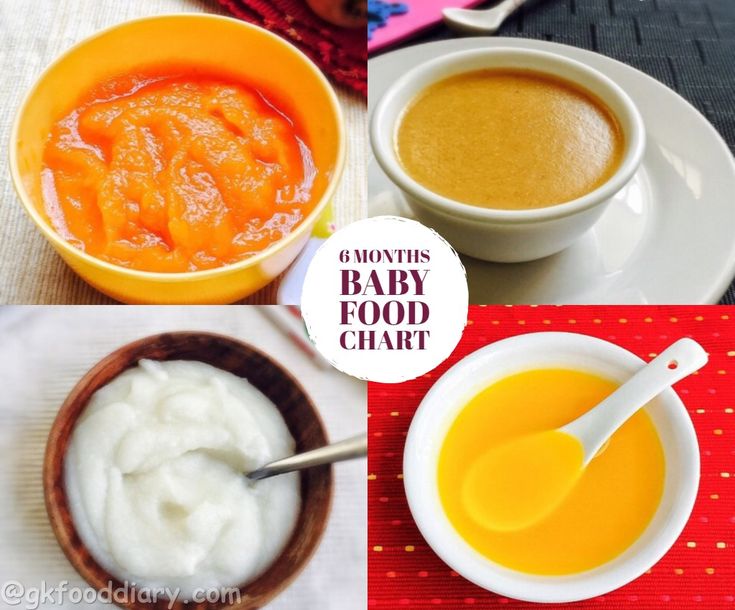 The prevalence and duration of breastfeeding is a controlled process, determined, on the one hand, by the psychological readiness of the pregnant woman for motherhood and breastfeeding during the first year of a child’s life, and, on the other hand, by support from the family and medical institutions for obstetrics and childhood**. Medical institutions in this situation should create the right conditions for the start of lactation and its support in the first year of a baby's life.
The prevalence and duration of breastfeeding is a controlled process, determined, on the one hand, by the psychological readiness of the pregnant woman for motherhood and breastfeeding during the first year of a child’s life, and, on the other hand, by support from the family and medical institutions for obstetrics and childhood**. Medical institutions in this situation should create the right conditions for the start of lactation and its support in the first year of a baby's life.
What affects lactation
Various factors influence lactation in women, which can be conditionally divided into 4 groups: psychological, organizational, social and medical. Organizational and medical factors are mainly important in the early stages of breastfeeding, while psychological and social ones are of long-term effect.
Organizational and medical factors
These include factors that depend on the correctness of the actions of employees of medical institutions in the postpartum period. Joint stay of mother and child in the maternity hospital, early breastfeeding, lack of labor induction and pre-lactation feeding, feeding from the first days of the baby's life, timely and reasonable assistance from medical personnel**. An important aspect is the early attachment of the baby to the breast. Immediately after birth, the baby is placed on the mother's stomach so that she can attach the baby to her breast. Early contact between newborn and mother stimulates the production of breast milk in greater volume. In addition to medical professionals, lactation consultants who specialize in helping mothers can help build the right breastfeeding technique.
Joint stay of mother and child in the maternity hospital, early breastfeeding, lack of labor induction and pre-lactation feeding, feeding from the first days of the baby's life, timely and reasonable assistance from medical personnel**. An important aspect is the early attachment of the baby to the breast. Immediately after birth, the baby is placed on the mother's stomach so that she can attach the baby to her breast. Early contact between newborn and mother stimulates the production of breast milk in greater volume. In addition to medical professionals, lactation consultants who specialize in helping mothers can help build the right breastfeeding technique.
Psychological and social factors
An equally important role is played by the psychological state of the mother during the period of feeding the child. The formed dominant of motherhood and lactation, comfortable conditions in the family, the mother's ability to relax during feeding, the absence of stressful situations have a positive effect on the nature of lactation and its duration**.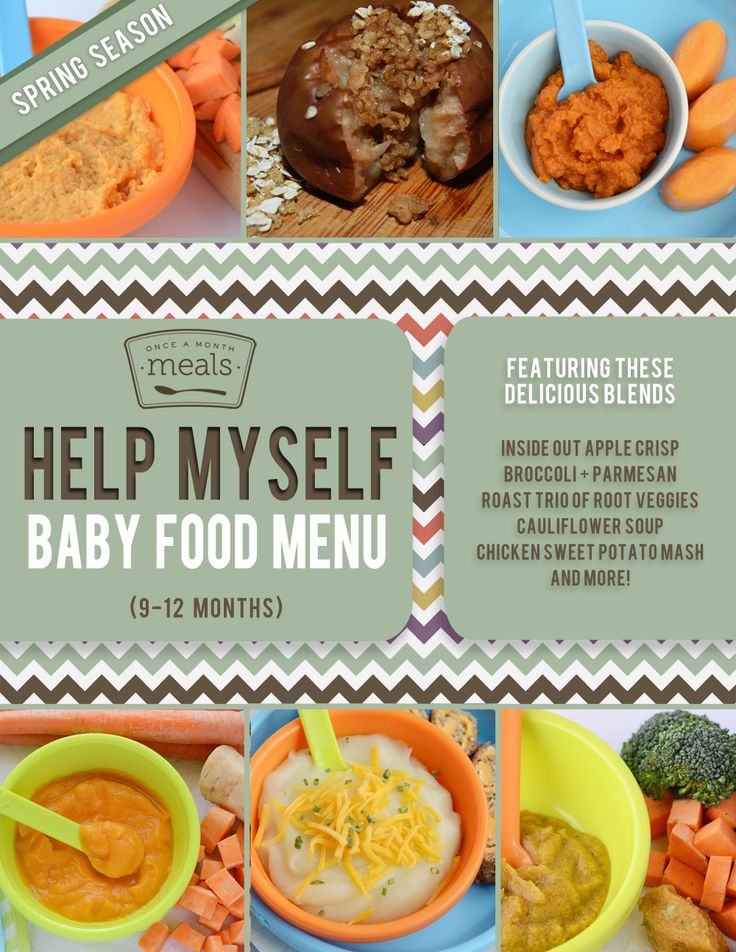 Since milk arrives differently for different women, if there is not enough milk, you should not despair at the first stage and keep a positive attitude and self-confidence. Worry only reduces the amount of milk. It is important not to start artificial feeding while there is hope of establishing breastfeeding*****.
Since milk arrives differently for different women, if there is not enough milk, you should not despair at the first stage and keep a positive attitude and self-confidence. Worry only reduces the amount of milk. It is important not to start artificial feeding while there is hope of establishing breastfeeding*****.
To assess the adequacy of lactation, a thorough analysis of the child's behavior, the frequency of urination, and the nature of the stool is necessary. Possible signs of insufficient lactation are:
- crying and restlessness of the child during or immediately after feeding;
- the need for frequent breastfeeding;
- prolonged feeding, in which the child makes a lot of sucking movements in the absence of swallowing;
- feeling by the mother of a rapid complete emptying of the mammary glands with the active sucking of the child, there is no milk when decanting after feeding;
- restless sleep, frequent crying, "hungry" cry;
- low baby weight gain;
- infrequent stools and urination*.

Initiation of breastfeeding
In the first days after childbirth, it is important to follow the following principles.
- Feed the baby on demand (up to 10-12 times a day). The growing need of the child for breast milk stimulates the formation of more and more of it in the mother; the child himself "dictates" to the mammary gland how much milk to produce not only in the first, but also in all subsequent days and months.
- Stop using teats, bottles. If a baby is started artificially feeding in the first 3-4 days after birth, then the chances of breastfeeding success are reduced.
- To prevent cracks and engorgement of the mammary glands (lactostasis).
Next stages of lactation
At the next stages of lactation, it is important:
- pay special attention to night feedings, the maximum amount of the hormone prolactin (responsible for the secretion of breast milk) is produced from 4 to 7 in the morning;
- eat right;
- if necessary, include in your diet products for lactation, with a lactagon effect;
- establish a rational daily routine for good sleep and rest;
- keep calm and have a positive, positive attitude towards feeding in all situations.
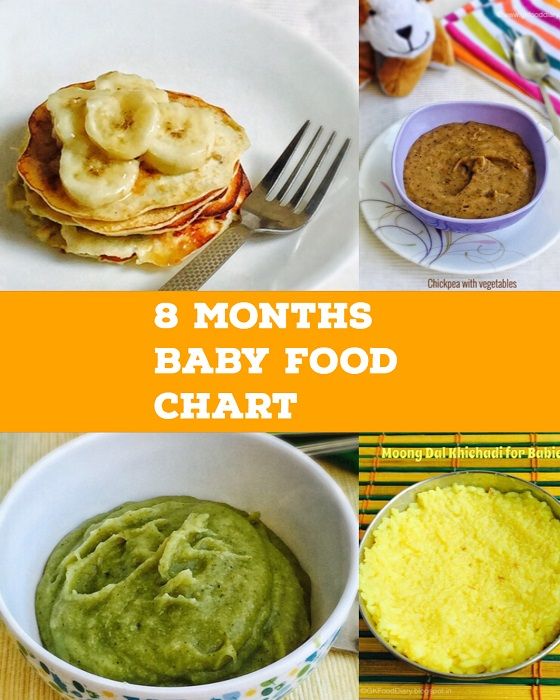
Lactation crises
This is important!
According to statistics, most mothers experience "lactation crises", which refers to a temporary decrease in the amount of milk (for no apparent reason). Therefore, the issue of increasing lactation is relevant for 80% of breastfeeding mothers.
Lactation crises are based on the peculiarities of hormonal regulation of lactation. Crises occur at 3-6 weeks, 3, 4, 7, 8 months of lactation. Their duration is on average 3-4 days. To go through crises, it is enough to put the baby to the breast more often and feed from both mammary glands. It is also necessary to ensure the rest and peace of the mother, a varied and nutritious diet, the consumption of lactogenic products, drinking drinks containing lactogenic preparations or herbs 15–20 minutes before feeding*.
Nutrition for nursing mothers
During breastfeeding, the mother's need for nutrients increases. Therefore, it is necessary to provide a complete diet: the amount of protein should increase to 120 g per day, fat - 100-120 g, carbohydrates - 450-500 g. The calorie content of the diet increases to 3200-3500 kcal. A breastfeeding mother should eat 5-6 times a day, preferably shortly before feeding her baby, to increase her milk supply****.
The calorie content of the diet increases to 3200-3500 kcal. A breastfeeding mother should eat 5-6 times a day, preferably shortly before feeding her baby, to increase her milk supply****.
Products to increase lactation
To stimulate the production of breast milk, a nursing mother can include special foods in her diet, such as Lactamil. It contains a complex of special herbs that give a lactogenic effect: cumin, nettle, anise, fennel. "Lactamil" contains not only herbs, but also milk protein, fatty acids, dietary fiber, a complex of vitamins, microelements. Their combination can contribute to a rapid recovery after childbirth, an increase in the quantity and quality of breast milk. Unlike folk recipes and homemade "herbal preparations", lactation products are clinically tested and have the exact dosage of medicinal plants.
Folk remedies for increasing lactation
There are many folk recipes to increase lactation. But it is always worth remembering: what helped one mother may not help or even harm another. Below we give a few recipes that can cause an increase in lactation. Before use, be sure to consult a doctor, because all herbs contain essential oils with a stimulating function and biologically active components with a hormone-like effect.
But it is always worth remembering: what helped one mother may not help or even harm another. Below we give a few recipes that can cause an increase in lactation. Before use, be sure to consult a doctor, because all herbs contain essential oils with a stimulating function and biologically active components with a hormone-like effect.
Infusion of fennel fruit, dill seeds and anise
Mix 1 to 1 anise seeds, fennel seeds and dill seeds. Pour 1 teaspoon of the resulting mixture with a glass of boiling water and let it brew for 10-15 minutes. Take 3 cups per day.
Infusion of cumin, hops, nettle leaves, dill seeds
Mix 20 g of hops, 25 g of dill and cumin seeds and dried nettle leaves. Take 30–40 g from the mixture, dilute with 1 liter of hot water and leave for 10 minutes. Take 50 ml before or during meals.
Anise seed tincture
2 teaspoons of anise seeds pour a glass of hot water and leave for an hour. Take 2 tablespoons 2-3 times a day.
Take 2 tablespoons 2-3 times a day.
Compliance with the basic principles of breastfeeding and a positive attitude can help a mother both increase lactation and cope with crises, support breastfeeding for a long period. We recommend that all mothers seek the advice of a breastfeeding specialist.
Video "How to support lactation and increase breastfeeding"
Kushalieva Ksenia, pediatrician, breastfeeding specialist
Links to sources
* National program for optimizing the feeding of children in the first year of life in the Russian Federation, https://xn--b1aaisgq1jga.xn--p1ai/Files/RussiaGuid/Programma2019.pdf.
** Factors affecting lactation. M. V. Gmoshinskaya, Research Institute of Nutrition of the Russian Academy of Medical Sciences, https://cyberleninka.ru/article/n/faktory-vliyayuschie-na-laktatsiyu.
*** Article. JPeds. Long-term mental health effects of breastfeeding in children and adolescents, Wendy H.



